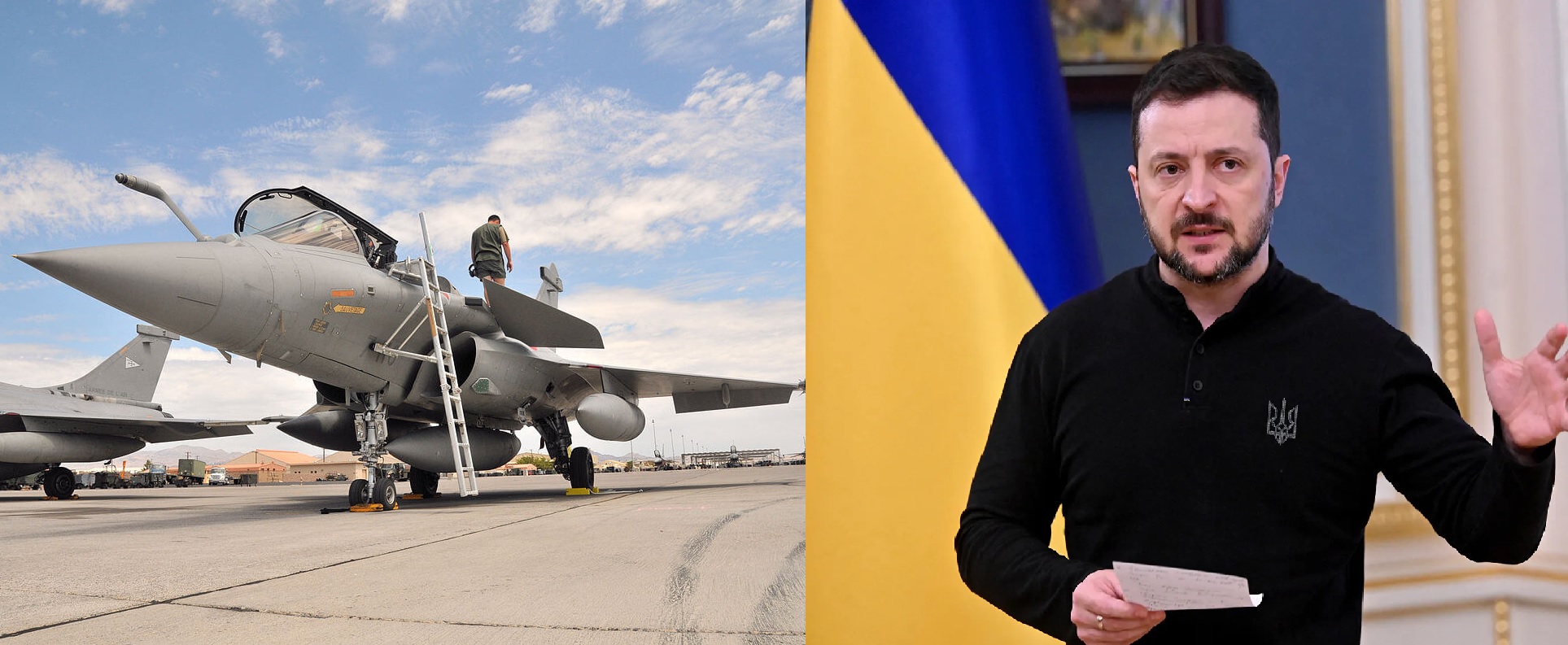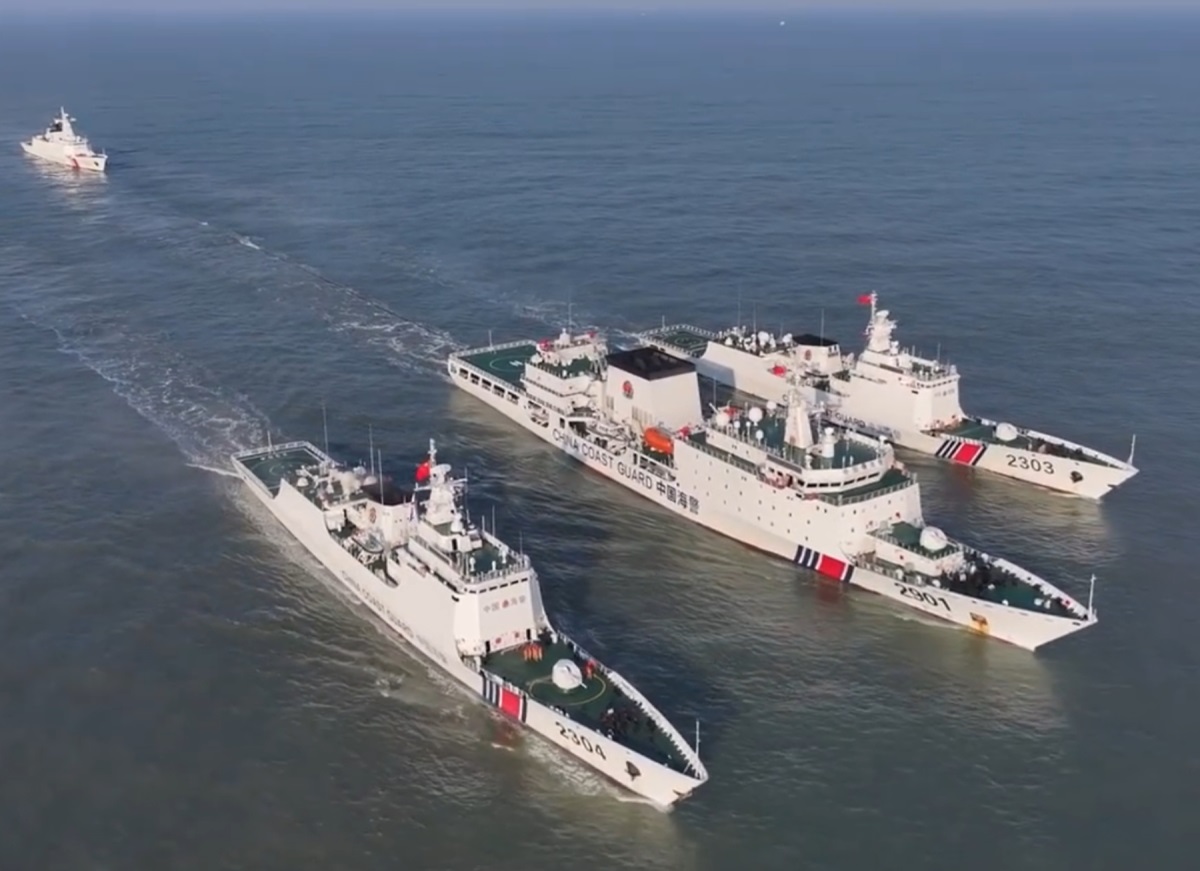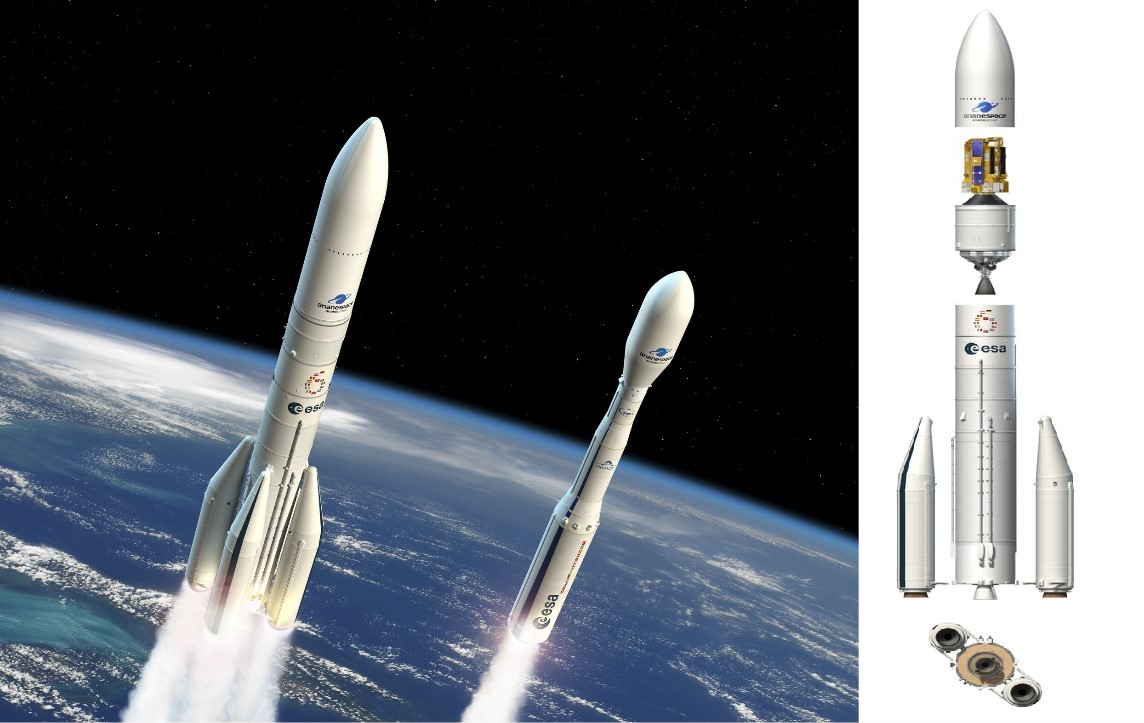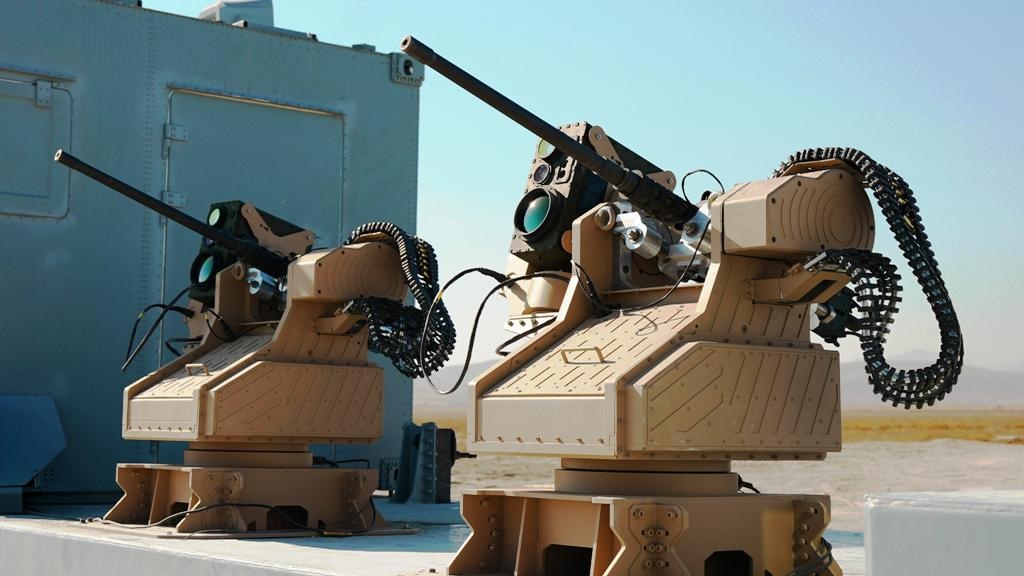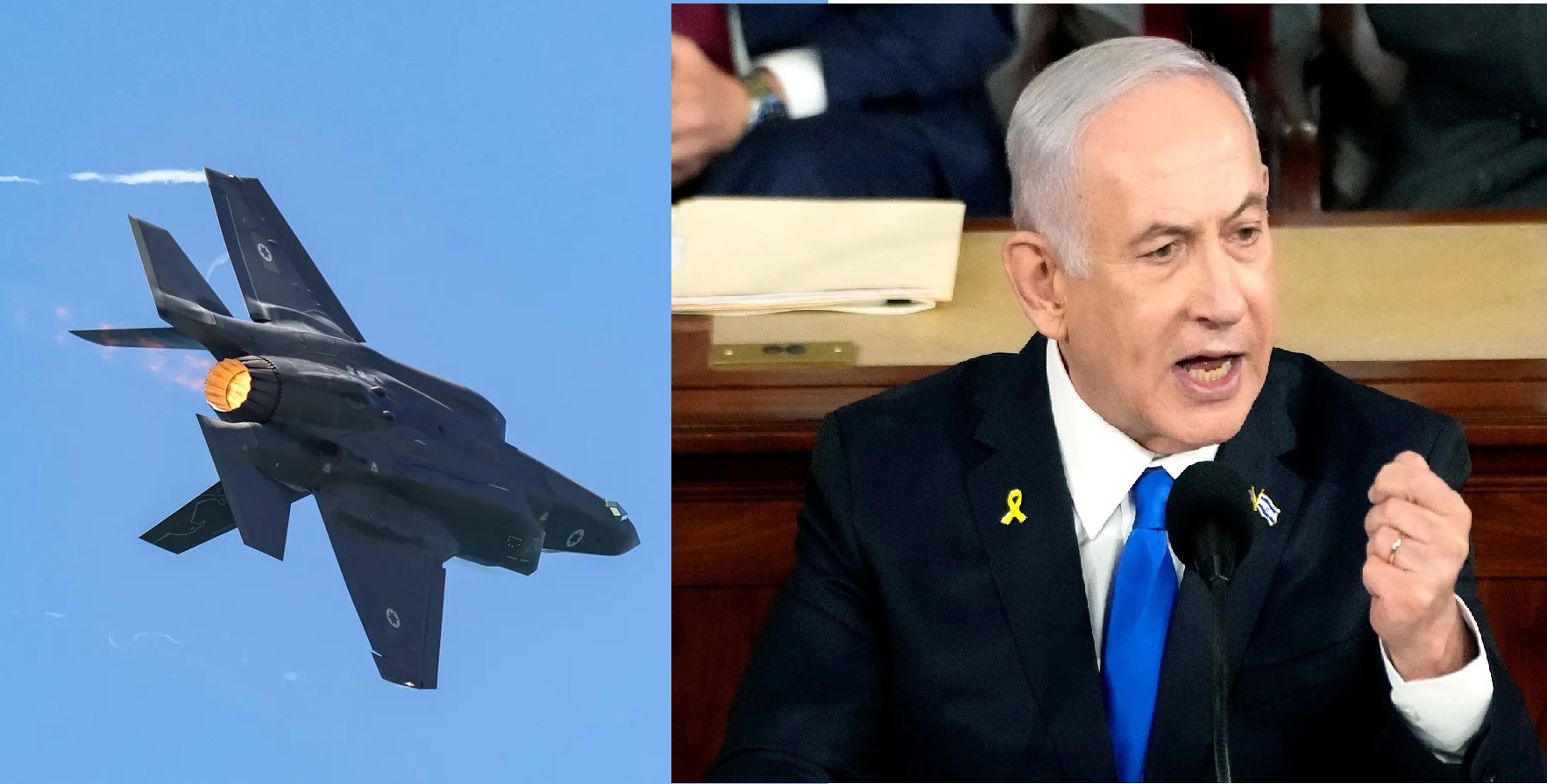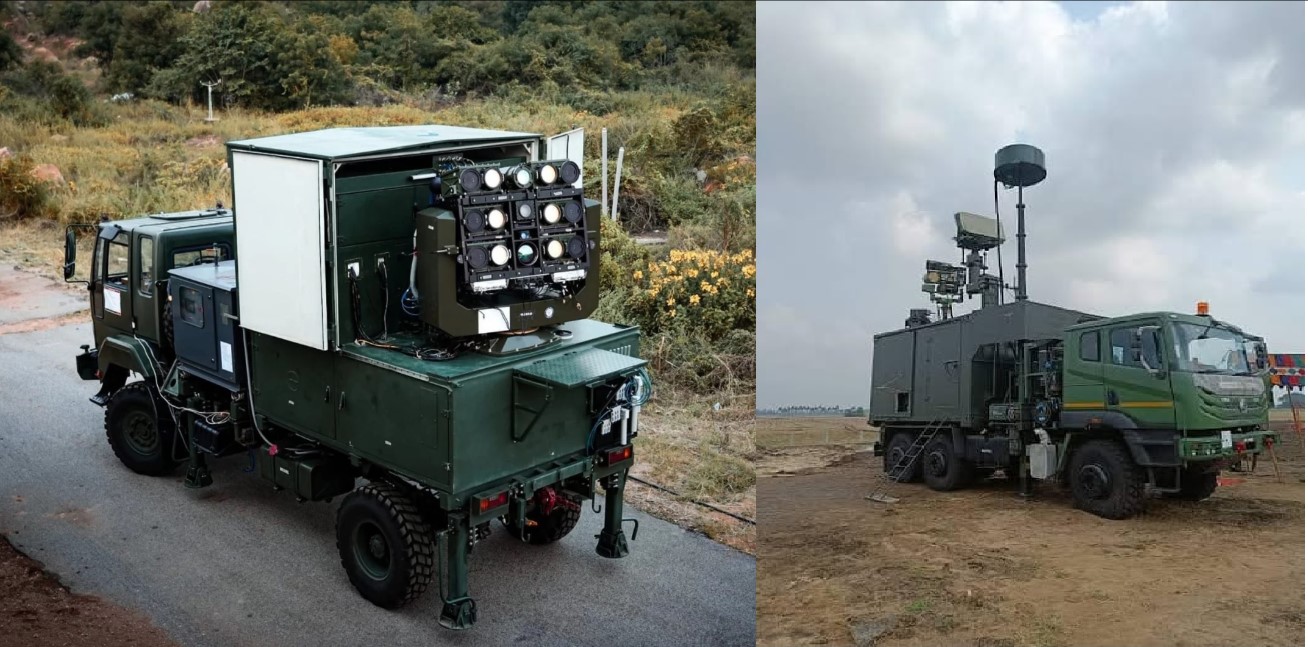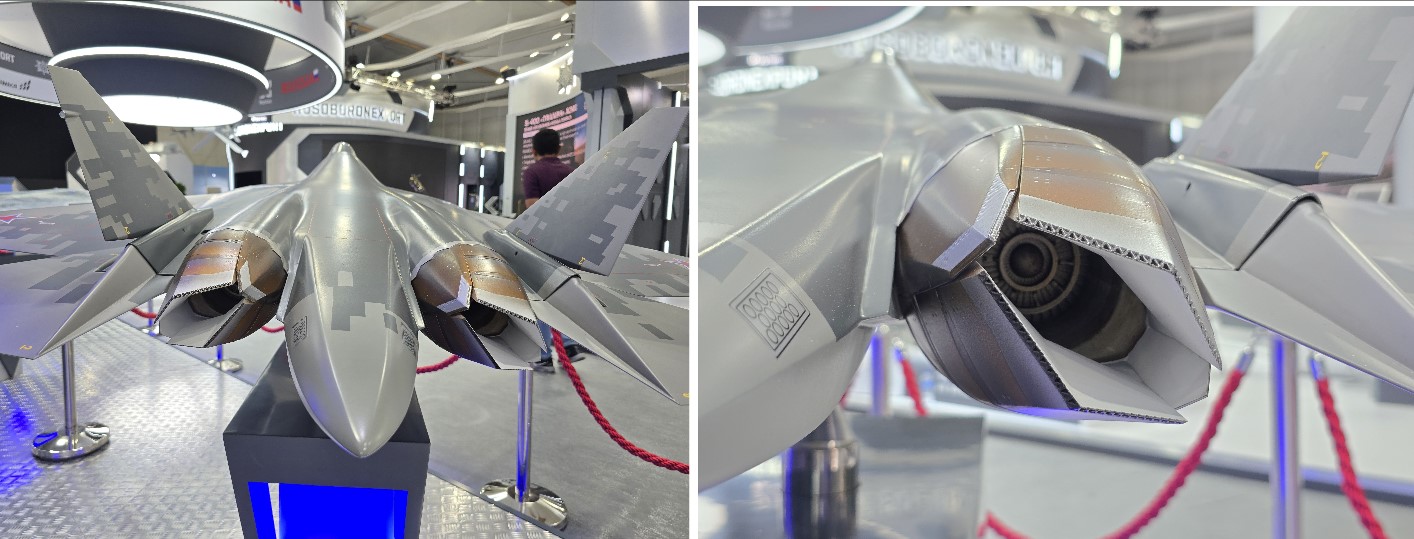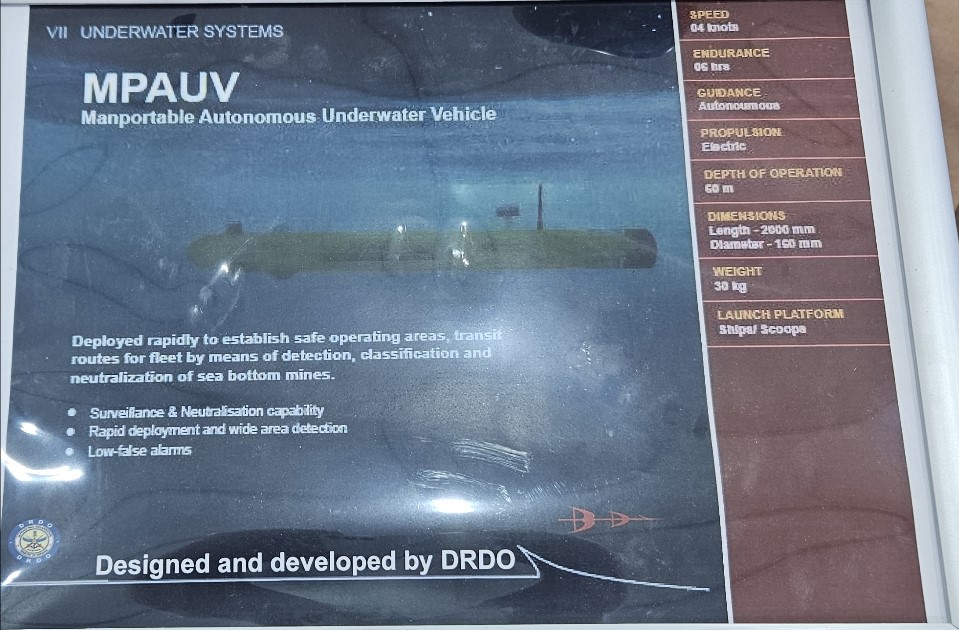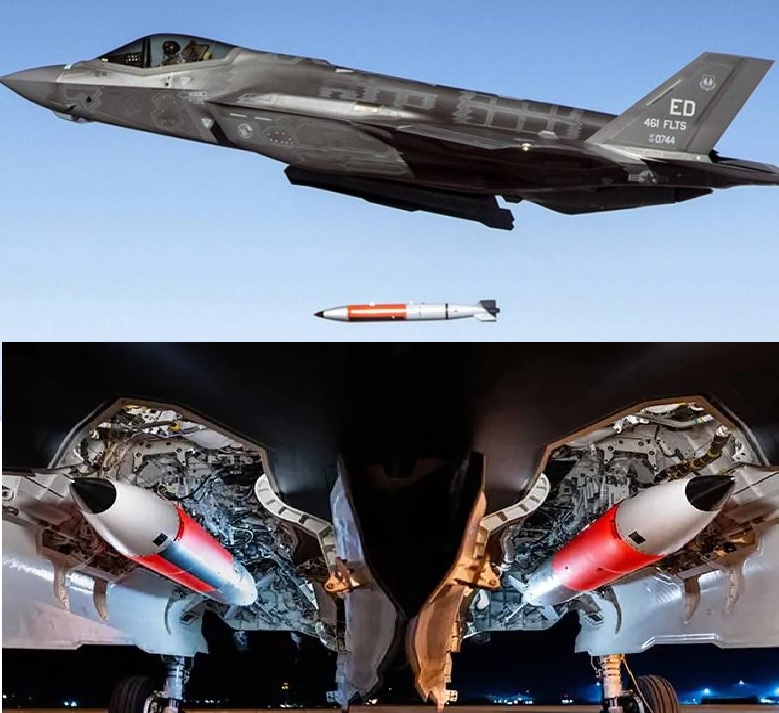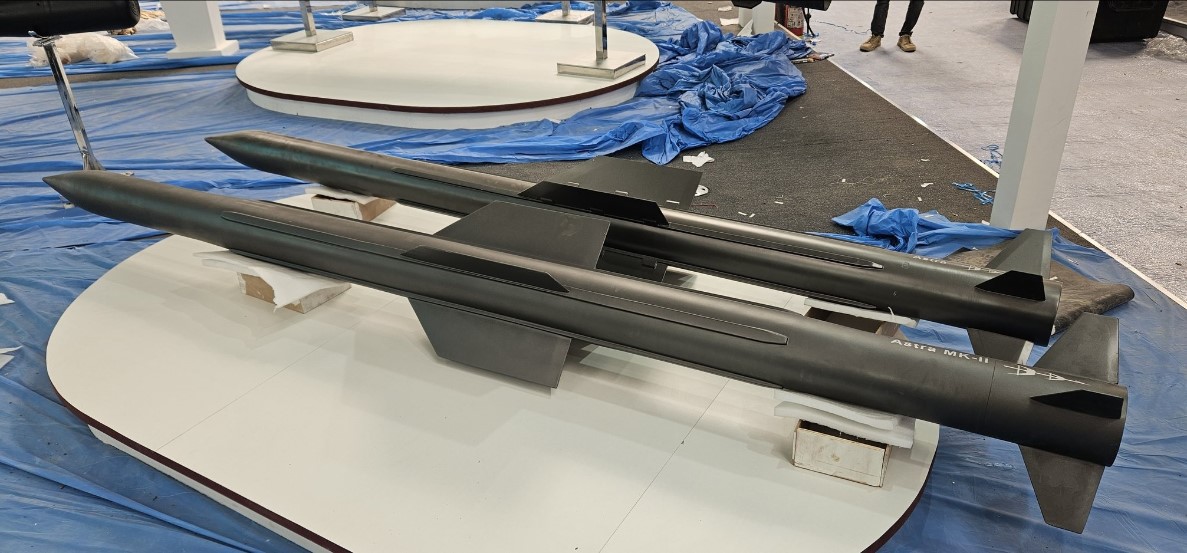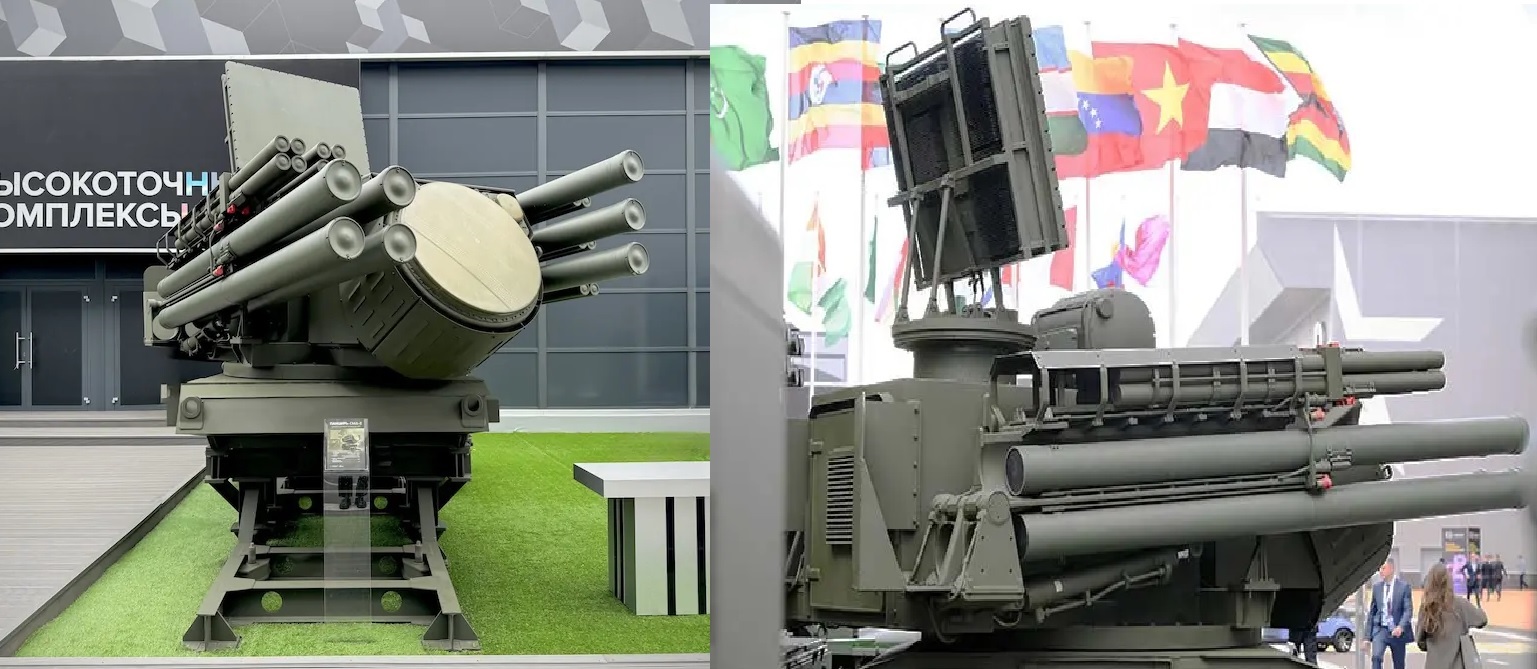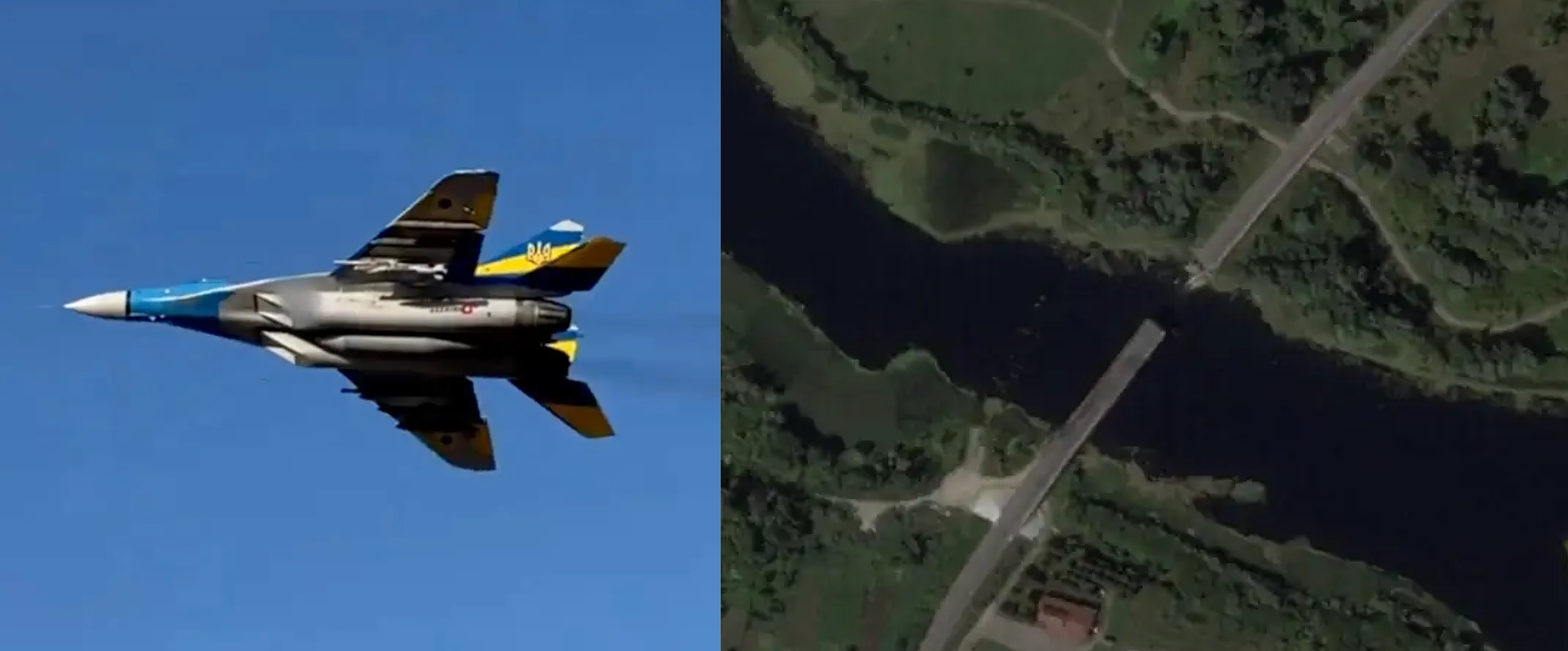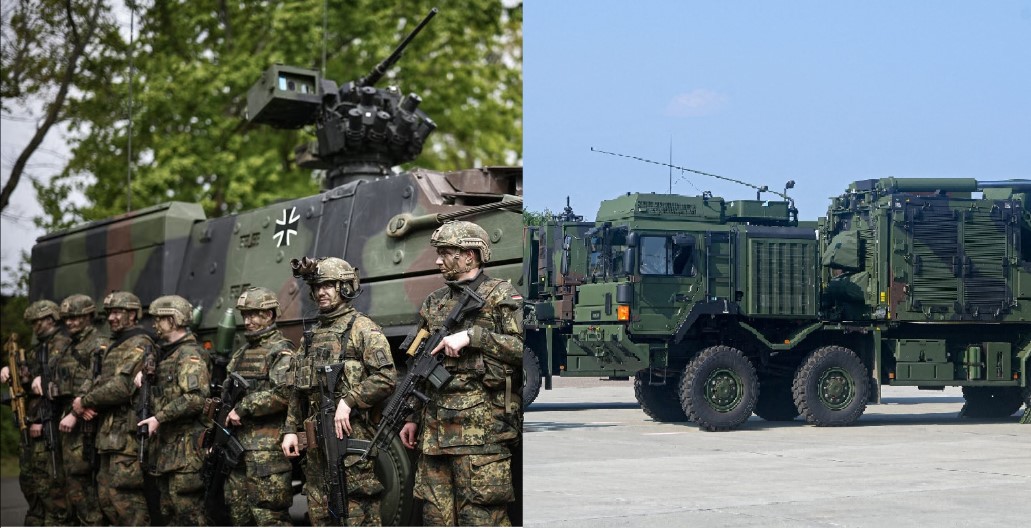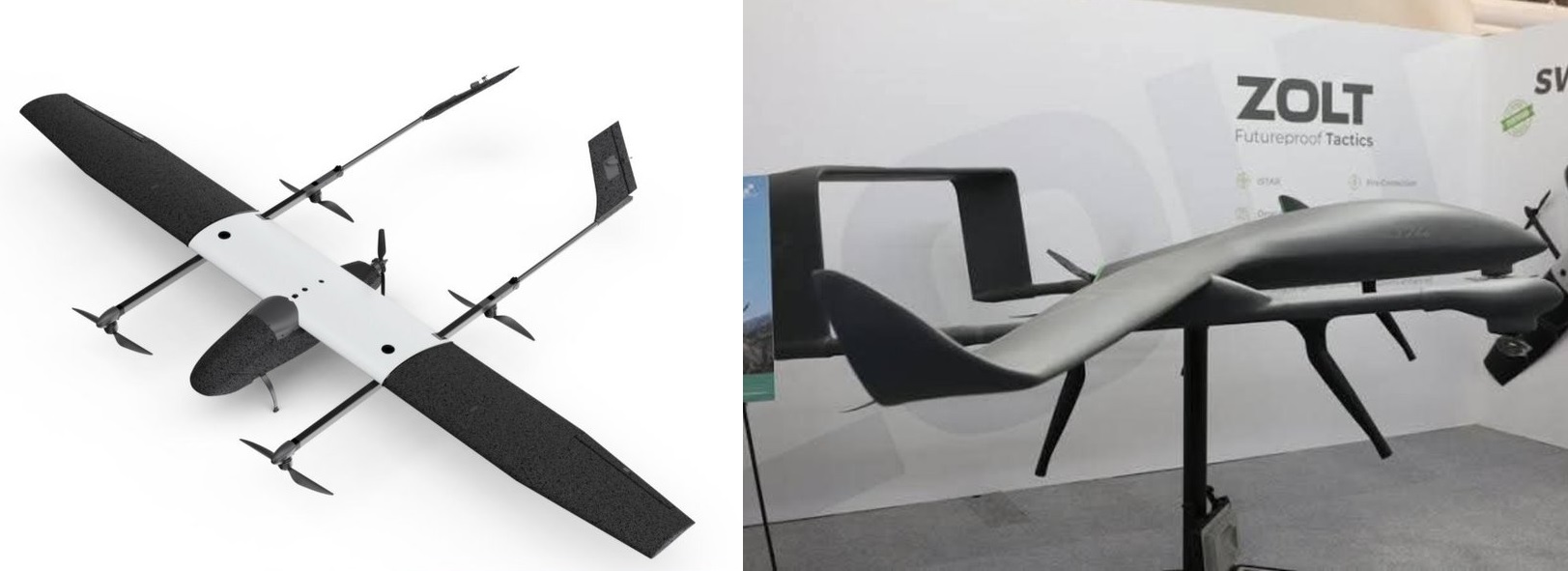World
Germany and France are rethinking their huge €100bn Future Combat Air System (FCAS) project, and both countries are now considering dropping the joint next-generation fighter jet. Instead, they may focus mainly on the “combat cloud”, a shared digital network that will connect aircraft, drones and ground systems. The change comes after years of arguments between Airbus (Germany/Spain) and Dassault Aviation (France). The two companies cannot agree on who controls the design, who does what, and who gets access to which technologies for the new fighter jet. Because of this, the aircraft part of FCAS has barely moved forward. France wants Dassault to have full design authority, saying it has the experience needed to build such a jet. Germany wants Airbus to have a bigger role, arguing that a shared European project must be shared fairly. After years of tension, both sides remain stuck. Because of this deadlock, Germany is now looking at other options, including working with countries in the GCAP fighter programme (UK, Italy, Japan). Some German officials say the country may even need a different future fighter if FCAS does not deliver. Meanwhile, Dassault says France can build its own next-generation fighter if the partnership fails — and Paris has already started small national studies for a possible “Plan B”. With the joint fighter in trouble, Germany and France are turning their attention to the combat cloud, the digital system that will allow European aircraft and drones to share information instantly on the battlefield. This part of FCAS is still progressing and is seen as easier to achieve than the aircraft. The decision is important for Europe’s defense industry. FCAS was meant to support thousands of jobs and keep Europe at the top level in stealth technology, AI, future engines, and advanced sensors. If the fighter project collapses, Europe may end up with different aircraft in different countries, making operations more complex and more expensive — and increasing reliance on U.S. jets like the F-35. France and Germany also have different military needs. France wants a jet able to carry its nuclear weapons and operate from an aircraft carrier. Germany is more focused on NATO operations and replacing its Eurofighters. These differences make it harder to agree on one shared jet. A final decision on the future of FCAS is expected by the end of 2025. The project may continue only as a combat cloud programme, or each country may choose its own fighter, or — though unlikely — they may still find a political compromise. For now, the dream of a single joint European next-generation fighter looks increasingly uncertain.
Read More → Posted on 2025-11-17 13:11:47World
In one of the most consequential defense agreements since the war began, Ukraine and France have formalized a plan for Kyiv to acquire 100 Dassault Rafale multirole fighters, marking a historic leap in Ukraine’s long-term air power transformation. The agreement was sealed on November 17, 2025, during President Volodymyr Zelensky’s visit to Villacoublay Air Base near Paris, where he and President Emmanuel Macron signed a letter of intent in front of a Rafale aircraft and the national flags of both countries. The French presidency confirmed the 100-aircraft target, while avoiding details on whether deliveries will draw from existing French stocks or rely entirely on new production. The deal forms the core of a wider 10-year strategic framework aimed at strengthening Ukraine’s aviation, missile defense, and long-term defense-industrial cooperation. A Strategic Partnership Anchored in Long-Term Support President Zelensky called the agreement “historic”, stressing that the Rafale will significantly bolster Ukraine’s air-defense, combat aviation, and deterrence posture as Russia continues high-intensity missile and drone attacks. Months of technical negotiations among Dassault Aviation, MBDA, Thales, and the defense ministries of both nations shaped the final structure of the deal. The framework extends beyond fighters, incorporating enhanced cooperation on SAMP/T air-defense systems, Aster 30 interceptors, and future European-Ukrainian technology exchanges. French officials emphasized that the objective is to ensure Ukraine can “acquire the systems it needs to respond to Russian aggression.” Production, however, remains a critical variable. France faces mounting commitments to major export customers such as India, Egypt, Indonesia, and Croatia, even as Dassault plans to expand output from three aircraft per month in 2025 to four per month by 2029. Additional manufacturing relief will come from Tata Advanced Systems Limited in India, which will begin producing Rafale fuselages from 2028, marking the program’s first international production line. Why the Rafale Matters for Ukraine’s Future Air Force Kyiv’s long-term modernization plan envisions a Western-standard fleet of roughly 250 fighter aircraft, combining F-16s, Gripens, and Rafales. Within this structure, the Rafale is viewed as the heavy multirole backbone, capable of long-range strike missions, air superiority, deep interdiction, and networked joint operations. The aircraft’s advanced SPECTRA electronic warfare suite, low-observable shaping, and compatibility with NATO weapons and data links make it uniquely suited for Ukraine’s future needs. While not fully stealth, the Rafale’s reduced radar cross-section and digital flight-control algorithms give it superior survivability in contested airspace. For Ukraine, the Rafale represents not only a combat capability but a gateway to full NATO interoperability. Airframe and Performance Length: 15.27 m Wingspan: 10.90 m Max takeoff weight: 24.5 tons Engines: 2× Snecma M88-2 Top speed: Mach 1.8 Supercruise: Mach 1.4 Range: 1,850 km (internal fuel), >3,700 km with tanks Combat radius: 1,000–1,400 km Service ceiling: 15,240 m Training, Maintenance, and Interoperability Challenges Integrating the Rafale will require sweeping upgrades to Ukraine’s military infrastructure. Conversion training for Rafale pilots typically takes 10–12 months, with extensive simulator and systems instruction. Pilots currently undergoing F-16 and Mirage training in Europe are expected to form the first cohort for Rafale transition. Meanwhile, Ukraine must build new maintenance hangars, digital avionics support facilities, and NATO-compatible weapons storage and testing centers. Western munitions—such as Meteor, MICA NG, SCALP-EG, and AASM Hammer—require dedicated handling systems not currently available in Ukraine. Despite these challenges, the Rafale is seen as a platform that will anchor Ukraine’s multi-decade modernization and increase its ability to conduct joint operations alongside NATO air forces. Financial Realities and Industrial Cooperation Financing the program remains the most complex hurdle. Ukraine’s defense budget—strained by wartime spending—will likely rely on French export credits, EU security funding, phased payment schedules, and industrial participation mechanisms. Paris, grappling with its own budget pressures, is expected to structure deliveries over several years, tied to production cycles and shared maintenance initiatives. For France, the agreement consolidates its role as a central European defense partner for Kyiv, building on earlier deliveries of Caesar howitzers, Mirage 2000-5F fighters, and Aster 30 missiles. A Defining Turning Point for Ukraine’s Air Power The planned acquisition of 100 Rafale fighters marks one of Ukraine’s most significant military modernization steps since independence. Beyond battlefield effects, it signals a long-term strategic realignment between Kyiv and Paris, one with serious implications for Europe’s defense architecture. Although final delivery schedules and financing details are still being negotiated, the message is clear: France and Ukraine are building a durable, multi-decade defense partnership. The Rafale deal positions Ukraine to field one of the most advanced air forces in Europe—and reshapes the balance of air power across the entire region.
Read More → Posted on 2025-11-17 12:38:35World
Chinese military and coast guard ships entered Japan’s territorial waters near the Senkaku Islands on Sunday morning, marking one of the most serious confrontations this year. The incident unfolded amid rapidly deteriorating China–Japan relations, following Japanese Prime Minister Sanae Takaichi’s recent remarks suggesting the possible use of force in a Taiwan conflict. The Incident According to the Japan Coast Guard,On Sunday morning four armed China Coast Guard vessels, equipped with deck-mounted machine guns, sailed into the 12-nautical-mile territorial waters surrounding the Senkaku Islands at about 10:15 a.m. The ships remained in the area for nearly two hours despite warnings from Japanese authorities before moving south. Beijing described the action as a “rights enforcement mission” within what it considers China’s own Diaoyu Islands, asserting it was safeguarding maritime rights and national sovereignty. Context of Rising Tensions Relations between the two Asian powers have worsened sharply since Prime Minister Takaichi warned earlier this month that Japan may take military action if China attempts to forcibly change the status of Taiwan.China condemned the remarks as interference in internal affairs, summoning the Japanese ambassador and warning of “serious consequences.” Following the diplomatic clash, China issued safety advisories to its citizens in Japan, citing “security risks,” while major Chinese airlines offered free ticket changes or refunds for travel to Japan. Japan, in turn, lodged a formal diplomatic protest over the territorial waters intrusion, calling the move a clear violation of sovereignty. Strategic Implications The Senkaku/Diaoyu islands sit at a critical junction in the East China Sea, roughly 110 km from Taiwan. Japan maintains the islands are an “inherent part of its territory,” while China claims historic rights over them. Sunday’s incursion — involving armed coast guard vessels — is seen by analysts as a notable escalation in China’s maritime posture. Experts warn that such confrontations raise the risk of unintentional clashes, especially with the U.S.–Japan security alliance watching developments closely. Diplomatic Repercussions Japan summoned China’s ambassador in Tokyo for an immediate protest. In response, Beijing summoned the Japanese ambassador, warning that any Japanese intervention regarding Taiwan would be “doomed to fail.” Tokyo is now studying options to boost surveillance and military readiness across its southwestern island chain, while China has signaled it may increase patrols around the disputed waters. The economic fallout is also drawing attention, with China’s travel warning potentially affecting Japan’s tourism industry — which relies heavily on millions of Chinese visitors annually. Both nations remain firmly entrenched in their positions, with no sign of de-escalation. Analysts believe the coming days may see more Chinese patrols near the Senkaku Islands, while Japan could reinforce its maritime and air defense presence. Without meaningful dialogue, the East China Sea may become the next major flashpoint in Asia’s shifting strategic landscape.
Read More → Posted on 2025-11-17 11:20:56Space & Technology
Europe’s space industry received a significant boost this week as ArianeGroup and Avio announced a sweeping industrial contract extending through 2029, covering the large-scale production of key Ariane 6 components, the next-generation P160 boosters, and crucial oxygen turbopumps for the Vulcain engine. The agreement also expands cooperation between the two companies by establishing a wider commercial framework for the mutual supply of components for both Ariane 6 and Vega C, Europe’s primary heavy- and medium-lift launch vehicles. Agreement Secures Long-Term Launcher Production The joint venture Europropulsion, owned equally by ArianeGroup and Avio, will produce the P160C solid rocket motors for the operational phase of Ariane 6 and Vega C. The contract ensures P160C production until 2029, supporting Europe’s plans for stable and predictable access to launch services. The P160C, developed by both companies, serves as the common booster for Ariane 6 and the first stage of Vega C. It provides higher thrust and improved performance compared to previous boosters. The system is undergoing qualification in 2025, with its first planned use on an Ariane 6 mission in Q2 2026, expected in the four-booster configuration designed for heavier payloads. Industrial Synergies Strengthen Europe’s Launch Sector Beyond booster production, the contract creates new synergies across the European launch ecosystem: Avio will deliver additional liquid oxygen turbopumps for the Vulcain engine, powering Ariane 6’s first stage. ArianeGroup will supply specialised components and equipment for Vega C, ensuring smoother production flows and reducing dependency on external suppliers. This interlinked industrial arrangement is designed to enhance cost competitiveness, increase production efficiency, and safeguard Europe’s long-term launch capabilities across commercial, governmental, and scientific missions. Leaders Emphasize Cooperation and European Autonomy Giulio Ranzo, CEO of Avio, praised the agreement: “Avio and ArianeGroup are very satisfied to have signed a broad industrial agreement, seeking to capture synergies between Ariane 6 and Vega C to improve technology, performance, and cost competitiveness. Their joint venture Europropulsion, now over 30 years old, remains a fundamental building block of Europe’s capabilities to access space.” Martin Sion, CEO of ArianeGroup, highlighted the importance of the P160C: “The ramp-up of Ariane 6 is in full swing. The arrival of the P160C motor opens a new chapter for Ariane 6 and Vega C. The agreement demonstrates once again that cooperation is key to ensuring a competitive and autonomous European access to space.” Broader Context: Europe’s Push for Launch Independence The announcement comes at a pivotal time for Europe: The continent is transitioning from Ariane 5 to Ariane 6, with the heavy-lift gap putting pressure on strategic missions. Vega C is preparing for its return to flight in 2025 after earlier setbacks. Competition from U.S. commercial launch providers, as well as increasing capability from China and India, has intensified. Securing long-term production of boosters, engine systems, and launch-critical components is essential to protect Europe’s independent access to orbit and stabilise its institutional launch schedule. A New Chapter for Ariane 6 and Vega C With the P160C entering production, Ariane 6 approaching full operational readiness, and Vega C moving toward its relaunch, the new ArianeGroup–Avio agreement reinforces Europe’s path toward launch resilience. The contract marks not only a production milestone but also a renewed commitment to collaboration, efficiency, and technological advancement across Europe’s space-launch ecosystem—ensuring a stable and competitive European presence in space through the end of the decade.
Read More → Posted on 2025-11-17 11:14:20World
Türkiye has confirmed the operational performance of its new Tolga short-range air defense system after a series of live-fire trials successfully intercepted multiple unmanned aerial targets on 16 November 2025. The achievement marks a major milestone in Türkiye’s evolving “Steel Dome” layered defense architecture and comes at a time when drone warfare is accelerating globally. Tolga Demonstrates Full Operational Capability According to Anadolu Ajansı and state defense manufacturer MKE, the Tolga system was put through a demanding sequence of live-fire engagements simulating real-world battlefield conditions. Designed to counter drones, loitering munitions, and low-altitude precision weapons, Tolga integrates surveillance, electronic warfare, and kinetic interceptors into a unified defensive structure. During the validation campaign, the system successfully neutralized all assigned unmanned targets, transitioning the program from development status to an operationally deployable capability. The tests reflect lessons drawn from the Russia-Ukraine conflict, where small, inexpensive drones have repeatedly threatened armored units, supply depots, and command nodes. Türkiye’s response is a rapid modernization drive to counter this category of threats with indigenous technologies. A Modular, Multi-Layered Defense Solution At its core, Tolga is designed as a modular close-air-defense ecosystem, merging sensors, effectors, and command functions into a single architecture. Key components include: Dedicated command-and-control unit Search and tracking radar Electro-optical tracking systems Electronic jammers for soft-kill defense 35 mm, 20 mm, and dual 12.7 mm guns, all equipped with specialized anti-drone ammunition The system detects small aerial targets at distances of up to 10 km, classifies them through surveillance and electronic warfare tools, and tracks them continuously using radar fused with electro-optics. Once Tolga identifies a threat’s profile and trajectory, it selects the optimum soft-kill or hard-kill response. Electronic jamming offers the first layer of defense, while kinetic fire — especially the 35 mm Airburst Ammunition — forms the last line against drones maneuvering at close range. Performance in Live Trials: 100% Success Across All Scenarios Development of Tolga began under MKE’s indigenous engineering program, with early displays at IDEF 2025 drawing international attention. The system later entered an accelerated test cycle at the Ministry of National Defense’s Karapınar Test and Evaluation Center in Konya. During the first full-scale live-fire campaign: Tolga recorded a 100% interception success rate Trials covered eight engagement scenarios Targets included micro-UAVs, tactical drones, and cruise-missile-like profiles Most interceptions occurred in the first short burst, demonstrating high accuracy and low ammunition use MKE officials confirmed that serial production infrastructure — including specialized ammunition lines — is fully prepared, enabling rapid delivery to the Turkish Armed Forces and potential export clients. Flexible Deployment Across Land, Sea, and Static Roles A major advantage of Tolga is its deployment versatility. Its architecture allows installation: As a fixed point-defense system for bases and infrastructure On wheeled or tracked vehicles for mobile ground force protection On naval vessels to shield fleets and coastal assets The system can operate in manual, semi-autonomous, or fully autonomous modes, making it suitable for different operational doctrines and threat environments. Tolga’s ammunition families — 35 mm for engagements up to ~3 km, 20 mm for mid-range defense, and 12.7 mm guns for close-in protection — further expand its adaptability. Strategic Role in Türkiye’s ‘Steel Dome’ Defense Network Tolga forms the lower tier of Türkiye’s emerging Steel Dome concept, which combines multiple air defense layers to counter everything from micro-drones to ballistic threats. The system fills a critical gap between point-defense guns and higher-altitude surface-to-air missile systems. Its introduction reflects Türkiye’s drive toward self-reliance in counter-UAS and short-range air defense technologies, reinforced by the global demand for reliable anti-drone systems. Growing Export Potential and Regional Implications By developing a fully indigenous, test-proven system, Türkiye positions itself as a major supplier in the rapidly expanding global counter-UAS market. With drone use rising in the Middle East, Caucasus, North Africa, and Asia, Tolga is expected to draw strong interest from countries seeking modern defenses against low-cost aerial threats. A series of international demonstrations is already planned, signaling Ankara’s ambition to expand its influence through defense partnerships and technology exports. A New Pillar in Modern Drone Warfare The successful debut of the Tolga short-range air defense system highlights how swiftly Türkiye’s defense sector is adapting to modern conflict. By integrating radar, electro-optics, electronic warfare, and advanced airburst ammunition into one cohesive platform, Tolga strengthens Türkiye’s resilience at a pivotal moment. As drone warfare continues to reshape global battlefields, Tolga offers not only enhanced national protection but also a competitive, export-ready solution that may influence global counter-UAS strategies in the years ahead.
Read More → Posted on 2025-11-17 11:04:01World
In a development sending ripples through the Middle East and the U.S. defense establishment, Saudi Arabia has reportedly requested American approval to purchase 48 F-35 stealth fighters, the most advanced combat aircraft in service today. The proposal, now under consideration by former President Donald Trump, has triggered deep concerns across Israel, the Pentagon, and U.S. policy circles. A Deal Far Bigger Than a Standard Arms Sale At first glance, the request looks like a conventional defense agreement. But the sale of the F-35, the most advanced stealth fighter in the world, is anything but routine. Israel currently remains the only Middle Eastern state operating the F-35, specifically the F-35I “Adir”, equipped with classified Israeli avionics, electronic warfare suites, and cyber systems. These upgrades enhance the jet’s combat performance and survivability and are developed jointly with American defense manufacturers. Why Israel Is Alarmed Should the U.S. agree to the Saudi request, Riyadh would not just receive American technology — it would inevitably gain systems derived from Israeli innovation, embedded deep within the aircraft’s architecture. That’s the heart of the problem. Saudi Arabia maintains close strategic ties with both China and Russia, even cooperating with Beijing on ballistic missile production and with Moscow on oil coordination through OPEC+. Intelligence services warn that any sensitive technology transferred to Riyadh could eventually be accessed by Moscow or Beijing through espionage, joint programs, or intelligence-sharing arrangements. For Israel, this poses a direct threat to its Qualitative Military Edge (QME) — a principle enshrined in U.S. law that guarantees Israel retains superior military capability over its regional neighbors. Losing exclusivity over the world’s most advanced fighter jet would erode the foundation of Israel’s deterrence strategy. American Concerns: Technology Leakage and Strategic Risk In Washington, the sale is viewed as a major security gamble. The F-35 is considered the crown jewel of American airpower, containing some of the most sensitive stealth coatings, mission systems, and sensor fusion software ever exported. U.S. officials fear that transferring this capability to a nation involved in active cooperation with Beijing on ballistic missile production and with Moscow through OPEC+ energy coordination could open doors for espionage, reverse engineering, or intelligence-sharing. Any compromise of F-35 technology would significantly erode America’s long-term technological dominance. Saudi Arabia’s Motive: Deterrence and Prestige Riyadh’s push for the F-35 reflects a combination of strategic and political drivers: Growing threat perception from Iran’s missile and drone arsenal Desire to modernize beyond F-15 and Eurofighter Typhoon fleets Ambition to become the region’s leading airpower Concern over fluctuating U.S. security commitments Possession of fifth-generation stealth fighters would dramatically elevate Saudi Arabia’s military standing. The Trump Factor Former President Trump, known for strengthening ties with Gulf states and backing major arms deals, is now weighing the Saudi request. His decision will have to account for: Potential risk to U.S. secrets Staunch Israeli objections The regional military balance America’s strategic competition with China and Russia At present, there is no indication of an imminent decision. A High-Stakes Choice With Global Consequences This moment forces Washington to confront a fundamental question: Should the world’s most advanced fighter jet — built on both American and Israeli innovation — be transferred to a state with strategic ties to U.S. rivals? Analysts warn that the consequences could extend far beyond the Middle East. Even limited access by Russia or China to F-35 components, software, or stealth materials could accelerate their own military aviation programs and undermine decades of Western superiority. This is not merely an arms sale.It is a pivotal test of how the U.S. safeguards the backbone of its air dominance and the foundation of Israel’s deterrence. As one intelligence official put it: “Any administration considering this deal should think very, very hard.”
Read More → Posted on 2025-11-17 10:31:35World
Relations between the People’s Republic of China (PRC) and Japan have taken a sharp turn toward confrontation after Beijing issued unusually explicit warnings that if Tokyo intervenes in what Beijing calls its “reunification” with Taiwan, it may destroy Japanese military targets. The statement marks one of the most serious verbal escalations between the two neighbours in decades. Why China Said This — What Provoked Beijing According to analysts, Beijing’s sudden escalatory tone was triggered by a combination of political signals, military activities, and public statements from Tokyo: Japanese leaders, including Prime Minister Sanae Takaichi, recently repeated that a Chinese attack on Taiwan could create a “survival-threatening situation” for Japan — a legal trigger for collective self-defence with the United States. Japan has expanded military cooperation with the U.S. around Taiwan, including new radar, missile-defence sites, and strengthened Self-Defense Force deployments in Okinawa and the Ryukyu Islands, all within striking distance of Taiwan. Tokyo publicly warned that peace in the Taiwan Strait is “critical” to Japan’s security, which China interpreted as a direct challenge to its One-China principle. China also reacted strongly to Japan’s recent statements criticizing Chinese coast-guard operations near the Senkaku/Diaoyu Islands, calling them evidence of Japan’s “reviving militarism.” Beijing viewed these moves as signs that Japan is preparing to act as a frontline partner of the U.S. in any Taiwan contingency — prompting China to issue a message intended to deter Japanese involvement. China’s Warning: “Destroy All Military Targets” China’s foreign and defence ministries issued a joint warning this week stating that any Japanese military involvement in Taiwan — defined by Beijing as a domestic matter — would constitute an act of aggression. According to state media and official statements, Japan would “bear the consequences” and face “crushing defeat” if it acts as a frontline in China’s reunification agenda. In one press briefing, a Chinese defence spokesperson warned that Japan’s decision-makers would “pay the heavy price” if Tokyo attempted to deploy its forces in a Taiwan contingency. Beijing also went further by advising Chinese citizens against travelling to Japan, citing “significant risks” to their safety — thereby signalling the dispute may spill over into travel, economic and people-to-people exchanges. Japan’s Response: Caution, Diplomacy & Strategic Ambiguity Tokyo, for its part, has sought to defuse the rhetoric while reaffirming its core policy of peace, security and regional stability. On Nov. 7, Japan’s Prime Minister Sanae Takaichi told parliament that a Chinese attack on Taiwan could amount to a “survival-threatening situation” for Japan and might trigger collective self-defence measures. In response to China’s remarks, Japan summoned China’s ambassador to lodge a protest over what Tokyo called “extremely inappropriate” language by a Chinese consul-general. Japanese officials emphasise, however, that Tokyo remains committed to the 1972 Japan-China Joint Communiqué and has not reversed its official position on Taiwan — which is to support peaceful resolution, while maintaining strategic ambiguity. Chief Cabinet Secretary Minoru Kihara said Tokyo hoped for a return to dialogue and urged Beijing to take “appropriate measures” so as not to damage broad-based relations. International Reaction: Concern, Caution and Strategic Implications The escalation in rhetoric has drawn attention from the wider Indo-Pacific and beyond. Analysts note the dispute adds another layer of complexity to the strategic competition between China, Japan and the United States in the region. Japan’s annual defence white paper had earlier described China’s military expansion as its most significant strategic challenge. The United States and other regional partners have not yet issued a unified public response specifically to the “destroy all military targets” rhetoric, but ongoing U.S.–Japan defence cooperation suggests growing concern about China’s long-term intentions. Observers caution that the situation risks rapid escalation if miscalculation occurs. Even a relatively small Japanese step toward supporting Taiwan—such as logistic assistance or intelligence sharing—could provoke stronger Chinese counter-measures, including economic pressure, military posturing around Japan’s islands or sanctions targeting Japanese interests.
Read More → Posted on 2025-11-16 17:38:44India
The Defence Research and Development Organisation (DRDO) is set to deliver an initial batch of its laser-based counter-drone system to the Indian Army and the Indian Air Force (IAF), marking the first induction of this class of weapon system in India. The system, designated the Integrated Drone Detection & Interdiction System (Mk-2) (IDD&IS Mk-2), boasts a 10 kW directed-energy laser and an engagement range of up to 2 km. Initial Order & Future Plans Details emerging from defence sources indicate that the Army and IAF will place an initial order for 17 units of the IDD&IS Mk-2. The quantity is modest by major procurement standards, but reflects caution: this is a “first series” deployment, ahead of further orders pending full operational satisfaction by the services. According to officials, “once the armed forces are satisfied with system performance, follow-on orders will be placed.” Officials emphasise that, worldwide, very few militaries have field-ed pure laser anti-drone weapons, so the Indian decision to procure initially is seen as prudent. System Specifications & Role The IDD&IS Mk-2 incorporates detection, tracking and hard-kill interdiction of unmanned aerial vehicles (UAVs). It uses a 10 kW laser module capable of focusing sufficient energy to disable or destroy small hostile drones within approximately 2 km. The system integrates radar or electro-optical sensors for detection, and combines ‘soft kill’ methods (signal jamming/spoofing) with the high-power laser for ‘hard kill’. While DRDO has not publicly confirmed all technical details of the Mk-2 version, informed commentary notes the 10 kW figure and ~2 km range as key performance parameters. Strategic Context & Global Landscape Laser-directed energy weapons (DEWs) remain at the cutting edge of air-defence technology. Until recently, only a handful of countries—such as Israel, the United States and China—have publicly deployed or demonstrated such systems. Indian procurement of the IDD&IS Mk-2 is therefore significant: it not only addresses the growing threat of drone proliferation but also marks a step toward future high-energy weaponisation. Defence analysts say that by placing a limited initial order, the Indian services are balancing “early adoption” of advanced technology with risk management: operational reliability, maintainability and cost per engagement still need to be proven in realistic conditions. DRDO’s Higher-Power Laser Programme Parallel to the IDD&IS Mk-2, DRDO is working on laser systems of much higher power. In April 2025 it publicly demonstrated a truck-mounted 30 kW laser weapon system (Mk-II (A)) at the National Open Air Range (NOAR) in Kurnool, capable of engaging drones, helicopter-type aerial threats, sensors and surveillance antennas. The 30 kW system reportedly uses multiple laser modules combined to achieve high output and is aimed at “hard kill” of targets at longer ranges (up to 4 km in some reports). DRDO has also declared that development efforts are ongoing for even higher-power systems (50-100 kW class) to counter cruise missiles, incoming missiles and more resilient airborne threats. Implications & Next Steps For the Army and IAF, the adoption of the IDD&IS Mk-2 provides a new layer of drone defence—one that goes beyond traditional kinetic interceptors or jamming. The laser system offers very rapid engagement, reduced logistical burden, and potentially lower cost per shot. The modest initial order of 17 units suggests that the services will evaluate the system under field conditions—deployment, maintainability, weather/optics challenges, integration with command networks—before larger scale procurement. DRDO and industry partners will likely accelerate work on follow-on lasers and ruggedisation of the system. From a manufacturing perspective, DRDO’s involvement signals that the Indian defence eco-system is moving toward greater self-reliance in directed-energy weapons. Caution & Operational Considerations While the technology is promising, practitioners caution that lasers have practical limitations: weather, line-of-sight constraints, thermal blooming, target coatings, and power-management demands. Field trials and service use will reveal how well the Mk-2 system handles these real-world factors. Also, the fact that very few laser DEWs are deployed in combat means that proof of concept remains emerging. This underlines why India has opted for an incremental procurement trajectory.
Read More → Posted on 2025-11-16 17:27:26World
Russia has unveiled the Su-57E export variant fitted with rectangular 2D thrust-vectoring nozzles, marking a major upgrade in its stealth, propulsion, and export configuration. The fighter’s debut at the Dubai Airshow 2025 — its first public appearance in the Middle East — has intensified speculation over whether India will be offered the low-RCS variant it has long demanded. A New Nozzle Design Signals a Shift in Russia’s Export Strategy Touching down at Dubai World Central in full export trim, the Su-57E immediately drew attention for its new rectangular 2D TVC nozzles, replacing the earlier circular 3D units. The redesigned nozzles significantly reduce radar cross-section, lower infrared signature, and improve stealth shaping at the aircraft’s rear — a known concern for foreign clients. Russian officials privately acknowledge that the nozzle redesign was driven partly by export requirements, with India being one of the nations that insisted on improved rear-aspect signature management. Aggressive Flight Displays Highlight Supermaneuverability During daily demonstrations, test pilot Sergei Bogdan put the Su-57E through high-angle-of-attack turns, post-stall manoeuvres, rapid climbs, and controlled flat spins. The rectangular nozzles maintained the fighter’s hallmark supermaneuverability, showing refined low-speed control and high stability during post-stall flight. Russia emphasized that the Su-57E provides a combination of stealth and agility, reflecting a design philosophy distinct from the F-35. Stealth Features and Sensor Suite Underscore Multirole Capability Officials from Rosoboronexport and Sukhoi highlighted the jet’s blended wing-body design, internal weapons bays, serpentine intake ducts, and radar-absorbent coatings, all contributing to its reduced observability. The aircraft integrates the N036 Byelka AESA radar, advanced IRST, long-range datalinks, and a robust electronic warfare suite, enabling both air-superiority and precision-strike missions while operating in contested environments. Russia Positions the Su-57E Against Global Competitors Moscow is marketing the Su-57E as an alternative to the F-35, China’s J-20, and the developing KF-21. Unlike Western systems, Russia stresses sovereign use rights, weapons integration freedom, and the absence of political restrictions. Despite this, analysts remain cautious about Russia’s production capacity, long-term sustainment, and supply chain resilience under sanctions. Russian officials confirmed that while current export units use the AL-41F1 engines, future batches are expected to receive the more advanced Izdeliye 30. India’s Big Question: Will It Get the Low-RCS Su-57 Variant? India’s objections during the now-paused FGFA programme focused on the rear-aspect RCS, engine signature, and the depth of available technology transfer. The introduction of rectangular 2D nozzles directly addresses one of India’s core demands. With the AMCA program progressing, India may still seek an interim or complementary fifth-generation solution — and Russia’s upgraded Su-57E appears tailored to re-open that dialogue. Whether Moscow is willing to provide the exact low-observable configuration India wants remains an unresolved but significant question. A Debut with Broader Geopolitical Implications The Su-57E’s appearance in Dubai is more than a flight demonstration — it is a strategic signal. With the Middle East emerging as a competitive fighter marketplace, Russia aims to secure relevance despite sanctions and industrial strain. The jet’s performance in desert conditions is being watched closely by potential buyers and Western analysts assessing Russia’s evolving fifth-generation capability. The revamped Su-57E, equipped with rectangular 2D TVC nozzles, marks Russia’s strongest export push yet for a true stealth-capable fifth-generation fighter. As Moscow courts Gulf customers and eyes renewed interest from India, the question now is whether this enhanced low-RCS configuration will translate into real export orders — and whether New Delhi will reconsider its stance.
Read More → Posted on 2025-11-16 17:08:49World
A fresh wave of media reports and unverified leaks has thrown Pakistan’s military establishment into controversy once again, after claims surfaced that top Pakistan Army generals secretly met US officials in Qatar to negotiate the deployment of Pakistani troops to Gaza — in exchange for money. According to these reports, Pakistan initially demanded $10,000 per soldier, while the US and Israel allegedly countered with $100. After tough bargaining, a supposed “compromise rate” of $500 per soldier for 10,000 troops was reportedly agreed upon. None of the governments involved have confirmed the story, but the allegation mirrors a long, documented pattern of Pakistan sending soldiers abroad in exchange for financial compensation, fueling further criticism. Why Pakistan Soldiers for Gaza? The alleged discussion aligns with Washington’s push for a Muslim-country–led stabilisation force in Gaza once major combat subsides. The US has repeatedly insisted there will be no American boots on the ground, preferring instead to rely on regional militaries to police Gaza, secure key zones, and neutralise remaining militant elements. For the US and Israel, Pakistan is often viewed as: A large, battle-experienced army A Muslim-majority force that gives political “cover” to a Western plan A military known to participate in foreign deployments if the price is right The latest reports claim Pakistan was approached because of its history of rented troop deployments, particularly in the Middle East, where Pakistani soldiers have long been stationed in Saudi Arabia and other Gulf states for security duties. History Suggests Pakistan Sells Its Soldiers — Critics Say While the current Qatar story remains unverified, analysts argue it is consistent with Pakistan’s long-standing pattern of deploying forces abroad for financial and political gain. Black September, 1970: Pakistan’s Darkest Chapter During the 1970 Black September crisis in Jordan, Pakistani soldiers under then-Brigadier Zia-ul-Haq helped the Jordanian monarchy crush Palestinian factions. Historical accounts accuse Pakistani-led units of participating in operations that killed thousands of Palestinians, with estimates often cited as high as 20,000–25,000.For critics today, Gaza would not be the first time Pakistan’s military was accused of turning its guns on other Muslims at the request — and reward — of foreign powers. Troops for Hire in the Gulf Pakistan has kept thousands of troops stationed in Saudi Arabia for decades, protecting royal palaces, training Saudi forces, and guarding sensitive sites. These deployments have consistently brought Pakistan billions of dollars in aid, loans, oil concessions, and military contracts. This history is frequently cited by critics to argue that Pakistan’s military leadership is driven not by ideology or strategic necessity, but by financial incentives. “Richest Generals in the World”: The Money Question The allegation that Pakistan bargained over soldier fees for Gaza reignites a familiar criticism:Pakistan’s generals are among the richest military officers globally, presiding over vast business empires, real-estate networks, and foreign assets while Pakistan itself struggles with poverty and financial collapse. Opposition politicians and analysts argue that: Pakistan’s military elite prioritises foreign deals that personally enrich their institution Public welfare, national security, and citizens’ interests come far below the generals’ financial motives Every international mission becomes another opportunity for the military to earn money, not honour The alleged Gaza troop negotiation, they say, fits this pattern “perfectly.” Inside the Reported Qatar Meeting Media claims suggest the following narrative: US officials met senior Pakistan Army leaders in Qatar, seeking troop contributions for a Gaza stabilisation force. Pakistan reportedly demanded $10,000 per soldier — an amount critics called “absurdly high” and reflective of military greed. The US and Israel allegedly rejected the demand, offering $100 per soldier. After “hard bargaining,” a supposed $500 per soldier settlement for 10,000 Pakistani troops was “informally agreed.” Talks were described as “intense,” with both sides aware that Pakistan’s cooperation required substantial financial incentives. Again, these details come from media leaks, unnamed sources, and regional commentary, not official statements. Why the Claims Sound Believable to Critics Even though the reports remain unverified, analysts argue that the story resonates because it aligns with Pakistan’s long-standing behaviour. Pakistan’s economy is in deep crisis, and many believe the military establishment is increasingly desperate for foreign money. The Pakistan Army has a well-known history of sending troops abroad in exchange for payment, and critics say its generals have repeatedly shown a willingness to pursue secret military diplomacy whenever a lucrative offer emerges. Historically, Pakistan has often served foreign interests — from fighting America’s wars in Afghanistan to providing security to Saudi Arabia — usually in return for aid, cash, or political rewards. Because of this pattern, many commentators insist the question is not whether Pakistan negotiated troop prices, but how much they were offered this time. A Blow to Pakistan’s Image — Whether True or Not The media storm has already dealt a heavy blow to Pakistan’s reputation. Regional analysts accuse Islamabad of exploiting the Gaza tragedy for profit and betraying the Palestinian cause. The idea that the army may treat Pakistani soldiers as export commodities, available for sale to foreign powers, has drawn sharp criticism. Some Middle Eastern commentators argue that, if the claims are accurate, Pakistan would once again be turning its guns on fellow Muslims, echoing its actions during the 1970 Black September crisis in Jordan. Within Pakistan, opposition voices claim the episode confirms a long-standing truth: Pakistan’s generals care more about money and foreign deals than about the country’s own citizens. No Official Confirmation — But Massive Embarrassment Pakistan’s government has not confirmed any troop deployment plan, nor addressed the allegations of price negotiations. The military has remained silent, and the United States has declined to specify which nations it is approaching for a Gaza stabilisation force. Regardless of official silence, the damage is significant. The perception that Pakistan’s military may be ready to sell its soldiers to the highest bidder, especially in a conflict involving Palestinians, has sparked widespread criticism. The controversy has revived painful historical memories and strengthened the belief that Pakistan’s military leadership values profit and foreign approval over principle, dignity, or national interest.
Read More → Posted on 2025-11-16 16:20:56India
India’s Defence Research and Development Organisation (DRDO) has unveiled its latest underwater platform, the Manportable Autonomous Underwater Vehicle (MPAUV), a compact mine-hunting and surveillance system designed for rapid deployment in coastal and littoral zones. Displayed at a recent defence exhibition, the system reflects India’s accelerating push to expand its indigenous autonomous underwater capabilities. Designed for Rapid Underwater Missions According to details released at the venue, the MPAUV is intended to be deployed quickly to secure safe operating areas and transit routes for naval vessels by detecting, classifying and neutralising sea-bottom mines. The vehicle is engineered to support fleets with fast-response underwater reconnaissance in both peacetime and conflict. Despite its man-portable form, the system is built to deliver high underwater performance suited for mine countermeasure (MCM) operations. Capabilities and Mission Role DRDO states that the MPAUV integrates: Surveillance & Neutralisation capability Rapid deployment with wide-area detection Low-false alarms for high mission reliability By combining autonomy with compactness, the platform enables underwater route clearance and area sanitisation without the need for large support vessels. Technical Specifications Key specifications displayed include: Speed: 4 knots Endurance: 6 hours Propulsion: Electric Guidance: Autonomous Operating Depth: 60 metres Dimensions: 2000 mm (length), 160 mm (diameter) Weight: 30 kg Launch Platform: Ship / SCOOPA compatible The MPAUV’s lightweight design allows operators to deploy it swiftly from small boats or larger ships, greatly enhancing flexibility in shallow-water operations. Strengthening Indigenous Underwater Systems The platform—marked “Designed and developed by DRDO”—highlights India’s growing commitment to unmanned underwater systems. As global navies increasingly rely on AUVs for mine warfare, seabed mapping, and coastal surveillance, DRDO’s MPAUV is set to become an essential asset in the Indian Navy’s evolving undersea operations. The system adds to India’s expanding catalogue of indigenous marine robotics intended to bolster maritime security across the Indian Ocean Region.
Read More → Posted on 2025-11-16 15:42:27World
The United States has completed a major series of stockpile flight tests for its upgraded B61-12 nuclear gravity bomb, validating the weapon’s compatibility with the stealth F-35A and marking a significant milestone in the country’s nuclear modernization program. The announcement was made by the US Department of Energy’s Sandia National Laboratories following the successful trials at the Tonopah Test Range in Nevada. Three Days of Critical Testing According to Sandia, the tests were conducted from August 19 to 21, with operational support from Hill Air Force Base in Utah. During the trials, inert B61-12 units were released from the F-35A, demonstrating the complete end-to-end functioning of the aircraft, its aircrew, and the weapon system under realistic mission conditions. These were the only B61-12 stockpile flight tests using joint test assemblies on the F-35 platform this year, according to the National Nuclear Security Administration (NNSA). Officials stated that the exercises were intended to evaluate the weapon’s operational readiness, ensuring it performs as expected when carried, released, and guided under combat-representative environments. A Cornerstone of U.S. Nuclear Modernization The B61-12, a modernized variant of the decades-old B61 bomb family, recently completed a multiyear life extension program (LEP) in late 2024. The initiative aims to extend the bomb’s operational service life by at least 20 additional years. The LEP includes: Replacement of ageing components Updated encryption and use-control algorithms Improved safety and arming mechanisms Enhanced compatibility with future aircraft such as the B-21 Raider Sandia officials noted that the LEP addresses all known age-related concerns in the U.S. B61 stockpile, ensuring the weapon remains safe, secure, and reliable well into the 2040s and beyond. Full-scale production of the refurbished B61-12 began in May 2025, with manufacturing expected to conclude in 2026. “Capstone Accomplishment” After Unprecedented Testing Pace Jeffrey Boyd, Sandia’s surveillance lead for the B61-12 and B61-13, praised the achievement, calling it: “the capstone accomplishment of a tremendous amount of planning and effort by those involved across Sandia and many partner agencies.” He added that this marks the highest number of B61-12 surveillance flight tests conducted within a single year, and likely the most for any future year as well — underscoring the intensity of the current evaluation cycle. First-Ever Thermal Preconditioning Trial A notable highlight of the test series was the first-ever thermal preconditioning of a B61-12 joint test assembly carried on an F-35A. The process exposed the weapon to extreme environmental conditions before flight, ensuring it could withstand temperature stresses likely to be encountered during real-world nuclear deployments. Sandia says this thermal testing is crucial to certifying the bomb for global operations, especially in regions with high-temperature fluctuations or extended alert postures. Strengthening Dual-Capable Aircraft Operations The successful release tests confirm the F-35A’s readiness as a dual-capable aircraft, enabling it to carry out both conventional strike and nuclear delivery missions for NATO and U.S. forces. The combination of stealth, advanced sensors, and compatibility with the B61-12 is expected to provide the Pentagon with a more survivable and precise low-yield nuclear option, enhancing deterrence posture in contested airspace. A Legacy Weapon Redesigned for the Future Originally introduced in 1968, the B61 remains one of the longest-serving components of the U.S. nuclear arsenal. The B61-12 variant replaces several older versions, offering: A guided tail-kit for improved accuracy Reduced overall number of variants in the stockpile Enhanced reliability and controlled low-yield strike capability With the F-35A now validated as a carrier, the U.S. nuclear enterprise moves a step closer to completing one of its most important modernization efforts.
Read More → Posted on 2025-11-16 14:49:22India
Fresh images shared by defence analyst @ReviewVayu have offered the clearest technical confirmation yet that India’s new Astra Mk-II air-to-air missile is a substantially larger and more advanced weapon than the operational Astra Mk-I. The missiles, displayed together at Aero India 2025 and again at the Department of Defence Production pavilion during the India International Trade Fair in New Delhi, have allowed analysts to closely study the structural and propulsion differences between the two variants. Experts observing the latest photographs note that the Astra Mk-II is both longer and wider, signalling a major redesign focused on extending range and terminal performance. The most visible upgrade is its expanded propulsion system: the motor diameter increases from 178 mm in the Mk-I to 190 mm in the Mk-II, confirming additional propellant volume. The images also reveal a distinctive tapered mid-section, a feature absent in Astra Mk-I. Analysts believe this is because the warhead and guidance section on the Mk-II retains the narrower Mk-I diameter, while the motor section has been widened, creating a stepped profile where the two meet. Further study of the display models suggests that the Mk-II incorporates a dual-pulse rocket motor, a major leap from the single-pulse Mk-I. Defence specialists note that both pulse-1 and pulse-2 motors use aft finocyl grain configurations, an advanced grain geometry that supports controlled burn characteristics, improved thrust efficiency, and sustained terminal energy. This allows the missile to re-energise itself mid-flight, enhancing manoeuvrability and kill probability at longer distances. Although the Ministry of Defence has not officially announced the range of Astra Mk-II, the enlarged motor, added fuel volume, and dual-pulse system strongly indicate a range well beyond 150 km, with many analysts estimating up to 200 km in optimal launch conditions. In comparison, the current Astra Mk-I has a maximum range of 110 km. The new imagery also highlights that the Mk-II’s mid-section is not only longer but noticeably wider, reinforcing that the missile carries more propellant than its predecessor. The Astra Mk-II was first unveiled to the public at Aero India 2025, where its expanded dimensions drew significant attention. Its reappearance at the ongoing trade fair has renewed interest among defence observers, who continue to express curiosity about the internal grain geometry of both propulsion pulses—details that remain classified. With a larger airframe, dual-pulse propulsion, and an improved flight profile, the Astra Mk-II marks one of the most significant advancements in India’s air-to-air missile development. The missile is expected to strengthen the Indian Air Force’s long-range engagement capabilities and narrow the gap with global next-generation BVR platforms as testing progresses and induction draws closer.
Read More → Posted on 2025-11-16 14:42:07World
London/Washington — The BBC is reportedly preparing for a possible $1–$5 billion lawsuit from U.S. President Donald Trump, who claims the broadcaster spread false and damaging reports about him. If the lawsuit goes ahead, it could become one of the biggest legal battles ever faced by the BBC — and British taxpayers may end up paying the cost. Why Trump Plans to Sue People close to the situation say President Trump believes the BBC repeatedly reported wrong, unfair, and biased information about him over the years. His team says BBC coverage of the 2016, 2020, and 2024 U.S. elections, along with documentaries and commentary shows, made him look bad in ways they argue were not true. Trump’s lawyers claim this hurt his reputation worldwide, and they believe U.K. defamation laws — which are stricter than those in the U.S. — give him a strong case. Trump’s Previous Legal Wins This possible lawsuit comes after Trump recently won several major settlements from American tech and media companies. He has already received: $25 million from YouTube and Meta $10 million from X (formerly Twitter) $16 million from CBS and ABC These settlements are not public in detail, but they have encouraged Trump to take on even bigger targets — and the BBC is next on the list. Why British Taxpayers Are Worried Because the BBC is funded mostly by the TV licence fee, the money collected from people across the U.K., any large payout or long legal fight would be supported by the public. Some British lawmakers warn that a multi-billion-dollar lawsuit could cause the BBC to cut services or even need government help. Online, many people joke — or worry — that U.K. households might end up “helping to pay for the Trump Presidential Library.” Experts Split on Whether Trump Can Win Legal experts disagree over whether Trump has a strong case. Some say he might win because U.K. defamation laws demand very careful and accurate reporting from broadcasters. If the BBC made mistakes, that could be used against them. Others argue the BBC has the right to report on the actions of a sitting U.S. President and that much of its coverage falls under fair journalism. Either way, a lawsuit of this size would be historic. So far, the BBC has not commented. However, inside the organization, senior editors and lawyers are reportedly reviewing past reporting to prepare for what could be a long and expensive legal fight. President Trump is expected to decide soon whether to officially file the lawsuit. If he does, the case would likely go to London’s High Court, drawing worldwide attention. For now, the BBC is waiting for Trump’s next move — and the U.K. public is watching closely, knowing they may play an unexpected role in a major international legal battle.
Read More → Posted on 2025-11-16 14:21:18World
Russia’s Rostec State Corporation is set to make one of its most extensive air-defence presentations in years at the Dubai Airshow 2025, showcasing a new generation of counter-UAV and short-range defence systems tailored for modern battlefield threats. Among the highlights will be the new Pantsir-SMD-E, a modular surface-to-air missile system designed specifically to counter mass drone incursions and precision-guided threats. Pantsir-SMD-E: A New Modular Shield Against UAV Swarms The Pantsir-SMD-E, developed by Rostec’s High-Precision Systems, represents a major evolution of the Pantsir family, shifting its focus to defending industrial, administrative and critical infrastructure sites from small, fast, low-flying threats—especially unmanned aerial vehicles. Rostec confirmed that the system can be mounted on building rooftops, ground platforms, or mobile installations, giving operators wide deployment flexibility. Its upgraded launcher supports either: Up to 48 miniature short-range guided missiles, optimised for small UAVs and swarm attacksor 12 standard Pantsir missiles, for engaging aircraft, cruise missiles and larger UAVs. Bekhan Ozdoev, Industrial Director of Rostec’s Weapons Cluster, said the system has already generated “significant foreign interest” after its first outing at IDEX 2025 in Abu Dhabi.“The threat of large-scale UAV attacks is now recognized worldwide,” Ozdoev noted. “The new modular Pantsir system provides a flexible rooftop-deployable solution, and the increased ammunition load of 48 missiles allows reliable protection of industrial, social and transport infrastructure.” Key Specifications – Pantsir-SMD-E (Export Model) Max target type: UAVs, aircraft, helicopters, cruise missiles Launcher capacity: 48 mini-missiles or 12 standard missiles Mini-missile range: Approx. 5–7 km (export, estimated) Standard missile range: Approx. 20+ km (export class) Elevation coverage: 0° to 85° Deployment: Rooftop, mobile vehicle, fixed ground Role: Defence of critical energy sites, government buildings, industrial zones, airfields Compact Short-Range Radar Debuts in the Middle East For the first time in the region, Rostec will unveil its compact short-range airspace surveillance radar aimed at detecting small UAVs and light aircraft—platforms often too small or slow for legacy radars. The radar weighs only 45 kg, can be installed on mobile vehicles, and is designed for rapid deployment. Short-Range Surveillance Radar – Specifications Weight: 45 kg Detection range: 7.5 km+ for medium-sized UAVs Mobility: Vehicle-transportable, compact tripod setup Target set: UAVs, small aircraft Role: Perimeter security, mobile anti-drone operations Rostec said the system is intended for operators needing lightweight, highly mobile counter-UAV monitoring capability. New Airspace Control System for Low-Altitude Threats The corporation will also present a new airspace control system capable of detecting and tracking drones, cruise missiles and other low-observation targets. The system specializes in identifying low-altitude and low-speed threats—profiles typical of improvised drones, loitering munitions and slow-flying reconnaissance craft. Airspace Control System – Key Features Monitoring of low-altitude, low-speed objects Detects both UAVs and cruise missiles Multi-sensor integration capability Real-time tracking of small and low-signature targets Verba MANPADS and Dzhigit Launcher to be Showcased Another centrepiece of Russia’s display will be the Verba short-range MANPADS, designed to engage aircraft, helicopters, UAVs and cruise missiles even amid intense optical jamming. Verba MANPADS – Specifications Target engagement range: Up to 6 km Ceiling: Up to 4.5 km Guidance: Tri-band infrared seeker resistant to flares and optical interference Targets: UAVs, cruise missiles, helicopters, low-flying aircraft To support the Verba, Rostec will also display the Dzhigit twin-launch system, which allows simultaneous or rapid-sequence firing of two missiles from a stabilized mount. Dzhigit Launcher – Features Setup time: 3 minutes Compatible with: Verba and Igla MANPADS Deployment modes: Fixed site, vehicle-mounted, or man-portable (disassembled) Fire mode: Dual fire-and-forget missile launch Russia’s Largest Presence Yet at Dubai Airshow The Dubai Airshow 2025, taking place 17–21 November, will host Russia’s extensive 1,000-square-metre pavilion organized by Rosoboronexport. Major Russian defence enterprises—including United Aircraft Corporation, Russian Helicopters, United Engine Corporation, High-Precision Systems, and KRET—will present export models, new upgrades and air-defence innovations tailored for the Middle East and Asia. Rostec officials say the 2025 lineup reflects the rapid global demand shift toward counter-UAV, short-range defence, and smart layered air-defence networks—domains increasingly shaped by the rise of drone warfare in Ukraine, the Middle East and Africa. As UAV threats evolve, the systems being introduced at Dubai underscore how Russia aims to secure a competitive foothold in the expanding global anti-drone defence market.
Read More → Posted on 2025-11-16 14:10:02World
A Ukrainian Air Force MiG-29 has destroyed a critical Russian logistics crossing near Kamianske in occupied Zaporizhzhia, using two US-supplied GBU-62 guided bombs fitted with JDAM-ER kits, newly released footage from 16 November confirms. The strike, analysed by the Soniashnyk military blog run by Ukrainian Air Force personnel, demolished a key bridge pillar, severing what Ukrainian analysts say was the only high-quality asphalt road sustaining Russian forces in that part of the front. The attack underscores how hybrid MiG-29/JDAM-ER loadouts are enabling Ukraine to systematically degrade Russian rear infrastructure from long standoff ranges without entering heavily defended airspace. Precision Strike Footage Confirms Deepening Ukrainian Strategy According to Soniashnyk, the targeted bridge near Kamianske had become a vital artery for Russian movements of ammunition, fuel, engineers and reinforcements. By collapsing the crossing, Ukraine forced Russian units to reroute supplies, complicating efforts to support offensives pushing near Stepove, Lobkove and the northern edge of the former Kakhovka reservoir. The footage captured the GBU-62 guiding precisely into the bridge pier — a strike Ukrainian analysts describe as part of a broader campaign to destroy fixed infrastructure and stretch Russian logistics across the south. The ability to hit deep targets with metre-level accuracy highlights a new phase in Ukrainian airpower built around blending Soviet-era fighters with Western precision munitions. MiG-29: From Soviet Dogfighter to Hybrid Precision Platform Originally designed in the 1970s to counter Western fighters such as the F-16 and F/A-18, the MiG-29 was never intended for precision strike missions. But Ukraine’s wartime modifications have transformed the Cold War–era jet into a versatile multirole platform. Since 2022, Ukrainian engineers have progressively adapted the Fulcrum to carry Western weapons, including the AGM-88 HARM. For JDAM-ER integration, technicians designed a custom pylon with an extended nose housing a GPS antenna and interface electronics. This system compensates for the lack of a NATO-standard data bus, enabling the aircraft to communicate precise coordinates to the weapon at release. What began as an experimental adaptation has now become routine: MiG-29s armed with AGM-88, GBU-62 JDAM-ER and other Western systems are regularly seen operating over Zaporizhzhia and even in cross-border missions into Russia’s Kursk region. GBU-62 JDAM-ER: A Cost-Efficient Long-Range Glide Weapon The GBU-62 is a 500-lb class guided bomb built around the JDAM-ER kit, which pairs a GPS/INS guidance tail section with a folding wing kit that extends range to 70–80 km when dropped from altitude. This allows a MiG-29 to strike bridges, depots and command nodes deep in Russian-held territory without flying into dense air-defence networks. JDAM kits, introduced by the United States, were created to convert unguided bombs into precision weapons. The ER wing kit — developed by Boeing and Australia — triples range at a relatively low cost. Australia later transferred its surplus stocks to Ukraine, complementing US deliveries. For Ukraine, JDAM-ER offers significant advantages: a full bomb typically costs only tens of thousands of dollars, far cheaper than cruise missiles like Tomahawk, which exceed US$1 million. Operational Impact: Russian Forces Forced to Reroute The destroyed bridge near Kamianske supported Russian forces advancing toward Stepove, Lobkove, and the former Kakhovka reservoir. With this crossing eliminated, Russian units are now forced to divert resupply along inferior dirt or gravel roads, sharply increasing travel times for fuel and ammunition. The loss has also compelled Russian troops to deploy additional engineers, bridging units and enhanced air-defence coverage along hastily selected alternatives. These substitute routes are often more exposed and unpredictable, making them easier for Ukrainian reconnaissance to monitor and target. Ukrainian officers say these pressures combine to create cumulative strain on Russian logistics, slowing operational tempo and complicating Moscow’s ability to sustain offensive momentum across the Zaporizhzhia front. Russia’s Own Glide-Bomb Effort and the Contrast With Ukraine Russia continues to employ its UMPK glide-bomb kits — low-cost attachments that convert FAB-series bombs into guided glide weapons launched from Su-34s and other aircraft. While Russian UMPKs are cheaper and produced in large numbers, they are typically used for wide-area destruction: urban districts, frontline trenches and fortified positions. Ukraine’s JDAM-ER stock, by contrast, is used sparingly and deliberately against high-value infrastructure, where a single hit can have outsize strategic impact. The Zaporizhzhia bridge collapse vividly illustrates how such precision strikes can disrupt entire supply corridors. A Signal of a Larger Transformation The Zaporizhzhia strike marks a deeper evolution in Ukraine’s wartime aviation. Soviet-era fighters are now consistently carrying Western precision munitions, granting Kyiv capabilities once thought impossible for legacy airframes. This has expanded Ukraine’s long-range standoff strike reach across multiple sectors and enabled hybrid loadouts capable of hitting strategic targets with high precision. The result is a form of cost-efficient precision warfare that allows Ukraine to stretch limited resources while delivering significant disruption to Russian logistics and command networks. With a sustained supply of JDAM-ER kits, Ukrainian crews continue to refine tactics and increase operational tempo. As more kits arrive, hybrid MiG-29/JDAM-ER strikes will likely intensify, hitting bridges, depots and infrastructure across occupied regions — and increasingly, inside Russia itself. A New Era of Airpower Adaptation By collapsing the Kamianske bridge, the Ukrainian MiG-29 armed with GBU-62 JDAM-ER glide bombs has demonstrated how effectively legacy aircraft can be adapted for modern precision warfare. Beyond the tactical victory, the strike signals a broader shift: Ukraine is transforming its Cold War fleet into a precision strike force capable of shaping battlefield outcomes far behind the front line. As these hybrid capabilities expand, Russian commanders must factor in the constant risk of long-range precision attacks on every major crossing, depot and logistics hub within dozens of kilometres of the frontline — a reality that will increasingly influence the strategic balance in the south.
Read More → Posted on 2025-11-16 13:56:52World
The United States has quietly reactivated the former Roosevelt Roads Naval Station in Ceiba, Puerto Rico, restoring a dormant Cold War hub just as Washington positions one of its most formidable air-sea force packages in the Caribbean. Though publicly framed as part of an expanded counter-narcotics campaign, the scale and sophistication of U.S. deployments point to a posture capable of exerting coercive pressure on Venezuela and testing networked maritime strike operations across the region. Roosevelt Roads—closed in 2004 after decades as a strategic hub for sea control, anti-submarine warfare, and regional logistics—has been quietly rebuilt. A CBS News report from the site, supported by recent satellite imagery, confirms renewed U.S. operations at the base and the reactivation of airfield infrastructure once thought permanently abandoned. F-35 Presence Marks a New Regional Capability Since early September, the base has hosted a detachment of ten F-35 Lightning II aircraft, including Marine Corps F-35Bs from VMFA-225. On November 4, an F-35B took off from the adjacent José Aponte de la Torre Airport, captured in U.S. Department of Defense imagery and confirming persistent flight operations. The F-35’s AESA radar, sensor fusion, and electro-optical targeting system allow detection and classification of surface vessels and low-observable aircraft at long range. From Puerto Rico, the jets can cover most of the southern Caribbean without refueling, giving Washington an operational reach that did not exist when the base closed two decades ago. U.S. officials still describe these missions as aimed at drug interdiction, yet the aircraft’s capabilities go far beyond traditional patrols. B-52 Overflight and Carrier Movements Elevate Tensions The U.S. presence expanded further when a B-52 Stratofortress flew directly over the USS Gerald R. Ford, heading south toward the Caribbean. With a range of several thousand kilometers, the B-52 can launch cruise missiles, maritime strike weapons, and stand-off munitions while remaining beyond most regional air defenses. The USS Gerald R. Ford, America’s newest nuclear-powered aircraft carrier, brings a dense air wing and an advanced dual-band radar suite, reinforcing layered defense with E-2D airborne early warning aircraft, F-35C and F/A-18E/F fighters, and long-range interceptor missiles. Together, these forces represent one of the most powerful U.S. naval postures in the Western Hemisphere in years. A Growing U.S. Naval Footprint in the Caribbean The western Atlantic currently hosts four U.S. Navy vessels, including the Ford and three guided missile destroyers. Inside the Caribbean basin, another seven ships operate near or within Venezuelan approaches. These include: Two Ticonderoga-class cruisers An amphibious assault helicopter carrier Two landing platform dock (LPD) ships Destroyers and cruisers equipped with the Aegis combat system carry vertical launch cells (VLS) capable of firing SM-2/SM-6 missiles, ESSMs, and Tomahawk cruise missiles. Together, they generate a protective shield around U.S. high-value assets and enable long-range strikes across the region. The amphibious group—with Marines, helicopters, tilt-rotor aircraft, and landing craft—provides Washington with the ability to conduct littoral operations, reinforce friendly facilities, or exert pressure along the Venezuelan coastline. Live-Fire Operations Add a Combat Testing Dimension Since September, U.S. assets have carried out live-fire engagements against small craft labeled as drug-trafficking boats. At least twenty strikes have been reported, with around eighty fatalities. The operations serve dual purposes: reinforcing the counter-narcotics narrative while simultaneously validating targeting chains, command-and-control (C2) processes, sensor-to-shooter links, and rules of engagement in the same maritime environment that would be used in a crisis involving Venezuela. These engagements function as a testbed for distributed maritime operations, kill-web integration, and EMCON-enabled ship tactics, where cruisers and destroyers minimize emissions while relying on off-board sensor cues. A Networked Battlespace Emerges The U.S. posture increasingly resembles a networked maritime strike grid: Carrier-based fighters and land-based F-35s share a common operational picture (COP). Maritime patrol aircraft, such as P-8A Poseidons, feed real-time data to both air and naval units. Space-based ISR platforms provide targeting updates and electromagnetic mapping. Amphibious forces offer flexible projection options from sea to shore. This level of integration allows Washington to hold Venezuelan naval, air, and coastal infrastructure at risk with minimal warning. Washington’s Political Messaging vs. Strategic Reality Publicly, the Biden administration frames the deployment as a necessary response to cartel activity, drug trafficking routes, and the Maduro government’s alleged ties to criminal networks. But behind closed doors, the presence of senior officials—ranging from the vice president to the secretaries of defense and state—signals that military options are being considered alongside existing sanctions and diplomatic measures. Internal U.S. crisis meetings, combined with the growing U.S. footprint in Venezuela’s immediate maritime environment, indicate that Washington views Venezuela as a live contingency, not merely a policing mission. For Caracas, images of U.S. jets and warships operating near its coastline strengthen the government’s narrative of an imminent invasion threat, a tool useful for internal consolidation and political messaging. Regional and Global Implications The reactivation of Roosevelt Roads is more than a bilateral issue—it affects security architecture across the Caribbean and beyond. Latin American states must weigh the value of increased U.S. protection against the risk of geopolitical escalation in their neighborhood. Russia and China, both active partners of Venezuela, may use the situation to deepen military cooperation, test U.S. reactions, or deploy advisers and ISR platforms. Navies worldwide are studying the unfolding crisis, particularly the U.S. emphasis on interoperable data links, logistics resilience, and air-sea integration—now central pillars of modern force design. For the United States, the revived Puerto Rican base and the assembled fleet together represent the largest and most complex regional posture in two decades, marking a decisive return to forward basing and power projection in the southern approaches to the Atlantic.
Read More → Posted on 2025-11-15 17:54:30World
In a significant setback for Europe’s financial strategy on the Ukraine war, a bold new scheme by the European Commission (EC) to turn frozen Russian state assets into a multi-billion-euro lifeline for Kyiv has run into strong resistance from Belgium, which holds the vast majority of those funds. Belgium’s reluctance has brought the proposal — a loan backed by Russian assets rather than direct confiscation — to a grinding halt, raising fresh questions about the EU’s legal authority and political will to tap the frozen money. What’s the matter? The proposal and the stumbling block In essence, the European Commission, backed by several member states, proposed structuring a €140 billion loan to Ukraine, using the frozen assets of the Bank of Russia and other Russian state-linked holdings as financial backing. The idea is that Ukraine would receive this loan, repayable only if Russia compensates Ukraine for the war-related damage — thereby turning the frozen assets into a form of reparations collateral. However, Belgium has balked at this approach. The assets are largely held via the Belgian-based clearing house Euroclear Bank. Belgium’s government and the institution itself have flagged legal risks, especially the possibility of Russia suing and imposing liabilities, as well as financial risk for Belgian taxpayers if something goes wrong. At the summit of EU leaders on 23 October 2025 the member states asked the Commission to present other options but failed to agree on the asset-backed loan. How much are the frozen Russian assets—especially in Belgium? According to multiple estimates, the total frozen Russian state assets run to at least US $300 billion (≈ €275 billion) globally. Specifically for Belgium/Euroclear: Euroclear manages around €200 billion in frozen Russian assets. Another article suggests Belgium holds two-thirds of Russian state assets worldwide and 86 % of such funds in the EU and gives a figure of about €183 billion in Belgium. While precise breakdowns are opaque, it is clear Belgium holds the lion’s share of the EU’s frozen Russian state assets. Why Belgium is resisting—and what happens next Belgium’s opposition is driven by several factors: Legal uncertainty: Frozen sovereign assets of a foreign central bank are typically protected by immunities and long-standing international law norms. Belgium fears that unlocking or using these assets in a way that resembles confiscation would expose Euroclear (and indirectly Belgium) to lawsuits from Russia. Financial liability: Belgium fears bearing disproportionate risk — since the assets are held largely in Belgium, any retaliation or legal judgment would hit Belgium hardest. As quoted: “I am not able, and I do not want, to fork out €140 billion” if something goes wrong. Precedent and systemic risk: Belgian officials argue that if sovereign assets deposited in Belgium are seized or redirected, confidence in the Belgian-based Euroclear system may collapse, leading to capital flight and damage to Belgium’s status as a financial hub. What happens next? The European Commission has been asked to present alternative mechanisms by the December 2025 summit. Among them are: using only the interest (already being done) rather than the principal of the frozen assets; a broad multilateral guarantee structure so risk is shared; and possibly a more gradual “collateral” model rather than outright asset transfer. Unless Belgium (and possibly other sceptical member states) is assured of full legal cover and burden-sharing, a full deal remains elusive. Implications for Ukraine, the EU and Russia For Ukraine: The failure to unlock a large loan backed by frozen assets means a crucial financing route remains blocked. Ukraine faces looming budget and defence funding needs for 2026-27 which some estimates put at around US $153 billion. For the EU: The episode exposes a fault-line in European financial solidarity and collective risk-taking. If one country holding the bulk of the asset says “no”, a unified mechanism stalls. It raises questions about the EU’s ability to convert frozen assets into war-time funding, and about the legal robustness of such mechanisms. For Russia: The Kremlin has warned legal consequences for Belgium if asset use is perceived as confiscation. Russia’s ability to retaliate — for example by freezing Western assets held in Russia — remains a latent threat, giving added weight to Belgium’s caution.
Read More → Posted on 2025-11-15 17:43:19World
The budget committee of Germany’s federal parliament (Bundestag) has approved an additional allocation of €3.85 billion from the special defence fund to bolster several major procurement projects for the Bundeswehr. The funding, aimed at enhancing operational capabilities and accelerating ongoing modernisation efforts, addresses key areas of air defence, aviation, soldier equipment and camouflage technology. Helicopters: Additional 20 H-145M Light Attack Aircraft One of the largest items in the new package is €1.1 billion for the procurement of an additional 20 Airbus H145M light attack helicopters configured as H-145M. Under a 2023 framework agreement, Germany had secured delivery of up to 82 H145M helicopters, of which 62 have already been ordered. The new tranche will raise the total to 82 units, with deliveries scheduled between 2027 and 2029. Currently, the Bundeswehr operates approximately 15 H145M LUH SOF special-operations configured helicopters. The procurement reflects a shift to expand attack and reconnaissance rotary-wing capacity and sustains the industrial line at Airbus’s Donauwörth facility. Air Defence Missiles: Further IRIS-T SLM Systems Another key allocation is €1 billion aimed at acquiring additional units of the IRIS-T SLM (Surface Launched Medium-range) missile system, produced by Diehl Defence. The system is central to Germany’s layered ground-based air-defence architecture. The Bundeswehr currently operates one IRIS-T SLM fire-unit, which achieved initial operational capability in 2024. In 2023 a contract was awarded for six fire-units and 216 missiles. The new funding will enable expansion of launcher elements, radar and command components, strengthening Germany’s commitment to modern air-defence readiness. Camouflage Equipment: Multispectral Nets and Stationary Systems The procurement package also includes €580 million for a framework agreement with Sioen Defence to acquire stationary multispectral camouflage equipment. This gear is designed to reduce detection by drones and satellites, strengthening the protection of forward-deployed and stationary positions. The German Army plans to order hundreds of thousands of modern multispectral camouflage nets, signaling an awareness of emerging aerial-surveillance threats and remote targeting. Eurofighter Aerodynamic Kit: P4E Modifications Another major item is €600 million committed to the first development phase of the P4E Aerodynamic Modification Kit for the Eurofighter Typhoon multirole combat aircraft. This upgrade programme targets improved manoeuvrability and performance enhancements. Germany currently operates one of the largest Eurofighter fleets in Europe, making the P4E kit a strategic step in long-term fleet modernisation. Night-Vision Goggles: Up to 100,000 Sets from Theon The budget package also earmarks a high three-digit million euro sum — approximately €570 million — for the procurement of up to 100,000 night-vision goggles from Theon Sensors. This is intended to equip dismounted soldiers with enhanced night-vision capability. Earlier programmes equipped the Bundeswehr with about 66,000 night-vision sets, and the new order represents a significant ramp-up in soldier-optics readiness. Strategic Context and Implications The €3.85 billion allocation reflects Germany’s accelerating defence procurement tempo in response to shifting threat perceptions, especially regarding Europe’s eastern flank. Officials cite lessons from the Ukraine conflict, emerging drone and cruise-missile threats, and domestic readiness concerns. The Zeitenwende policy continues to channel large-scale investments into modernisation. The package spans aviation, air defence, camouflage, and soldier systems — balancing platform modernisation with force-protection enhancements. However, delivery schedules indicate that full operational impact will unfold gradually over the decade.
Read More → Posted on 2025-11-15 16:29:11India
In a significant boost to India’s indigenous drone ecosystem, ideaForge Technology Limited has secured a major Capital Emergency Procurement order from the Indian Army, comprising its latest ZOLT Tactical UAV worth ₹75 crore and an additional ₹30-crore order for the high-performance VTOL Hybrid SWITCH V2 unmanned aerial system. The combined value of the contract stands at approximately ₹105 crore, marking one of the largest recent procurements of Indian-made UAVs. The order is the culmination of months of rigorous field evaluations, including Electronic Warfare (EW) trials, performance checks in GNSS-denied scenarios, and stringent assessments of the country of origin — a priority for the Army amid rising demand for trusted and secure platforms. ZOLT: India’s New Multi-Role Tactical Workhorse Unveiled earlier this year at Aero India, the ZOLT Tactical UAV is ideaForge’s newest next-generation platform, designed specifically for modern battlefield requirements. The system is purpose-built for long-range ISR (Intelligence, Surveillance & Reconnaissance), precision payload delivery, and autonomous operations in complex combat zones. The Army’s choice signals growing reliance on platforms that can withstand high-threat, high-altitude, and signal-contested environments, where ZOLT has demonstrated remarkable resilience. Key capabilities include: Advanced Electronic Counter-Countermeasures (ECCM) Autonomous operation in GNSS-denied conditions Robust anti-jamming features High-endurance surveillance payloads Secure communication links for contested battlefields ideaForge describes ZOLT as a “future-ready ISR asset” engineered to operate even under aggressive EW interference, radar exposure, and communication disruption. SWITCH V2: Battle-Tested VTOL UAV Gets Fresh Induction The order also includes the SWITCH V2, a hybrid Vertical Take-Off and Landing (VTOL) drone that has already been deployed in multiple forward areas. Known for its all-terrain versatility, SWITCH V2 combines fixed-wing endurance with rotor-driven mobility, allowing rapid deployment from rugged Himalayan terrain to dense border zones. The platform has been widely appreciated for: High-altitude performance Long-endurance ISR missions Quick setup for frontline deployment Proven combat reliability in active conflict environments Given its operational history, the additional order reflects the Army’s continued confidence in the drone’s battlefield utility. A Milestone for Indian Drone Manufacturing ideaForge co-founder and CEO Ankit Mehta said the procurement reflects the Army’s trust in the company’s innovation-focused ecosystem.“This order underscores our commitment to delivering best-in-class systems to our soldiers and creating long-term value for our shareholders while actively shaping the future of this technology,” he stated. ideaForge has emerged as one of India’s most successful defence UAV manufacturers, with multiple products already inducted into the armed forces and paramilitary services. The company continues to expand its manufacturing footprint and R&D investments, especially in autonomy, secure communication systems, advanced AI-enabled payloads, and EW-resilient navigation technologies. Strategic Impact and Future Outlook The procurement aligns with India’s urgent push for indigenization in defence technologies, especially unmanned systems that can operate in the shadow of electronic warfare threats — a defining feature of modern conflicts from Ukraine to West Asia. With escalating tensions across diverse frontlines, including the northern borders, the Army’s focus is shifting toward persistent ISR, real-time threat monitoring, and precision force protection, areas where platforms like ZOLT and SWITCH V2 offer substantial advantages. The new order not only strengthens the Army’s tactical ISR capabilities but also reinforces India’s ambition to become a global drone technology hub, driven by deep-tech manufacturers like ideaForge.
Read More → Posted on 2025-11-15 16:11:54Search
Top Trending
-
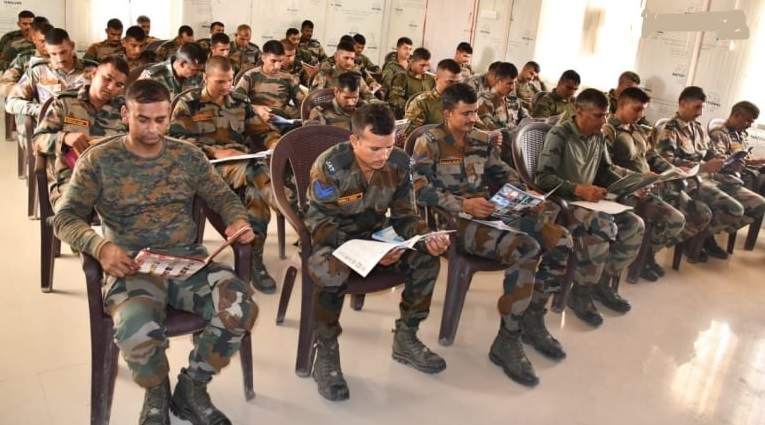 Agneepath Scheme replaced with Sainik Samman Scheme 2024, Defence Minister Rajnath Singh Relaunched Agniveer Scheme
Agneepath Scheme replaced with Sainik Samman Scheme 2024, Defence Minister Rajnath Singh Relaunched Agniveer Scheme
-
 Death in Dhaka: CIA Links Surface After Putin Shielded Modi During SCO Meet
Death in Dhaka: CIA Links Surface After Putin Shielded Modi During SCO Meet
-
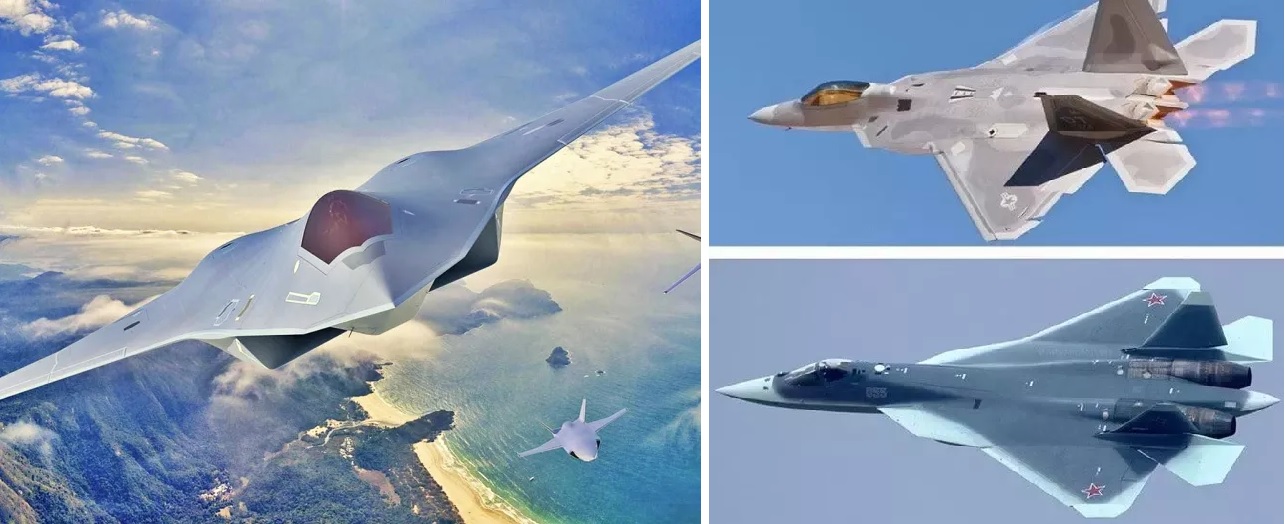 Key Differences Between 5th vs. 6th Generation Fighter Jets
Key Differences Between 5th vs. 6th Generation Fighter Jets
-
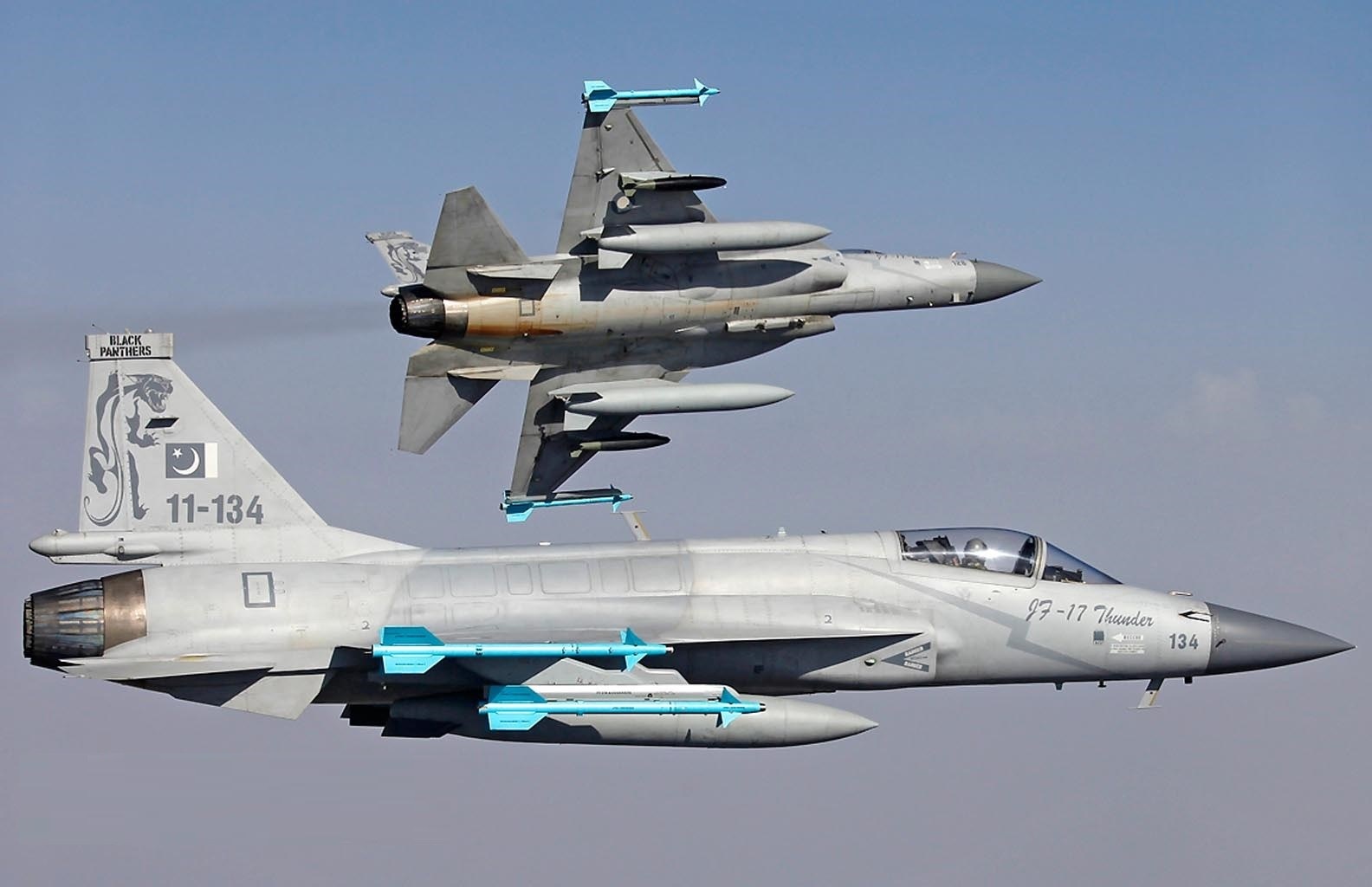 Pakistan Air Force to Unveil Stealth-Enhanced JF-17 Block 4 Fighter Jet by 2028
Pakistan Air Force to Unveil Stealth-Enhanced JF-17 Block 4 Fighter Jet by 2028
-
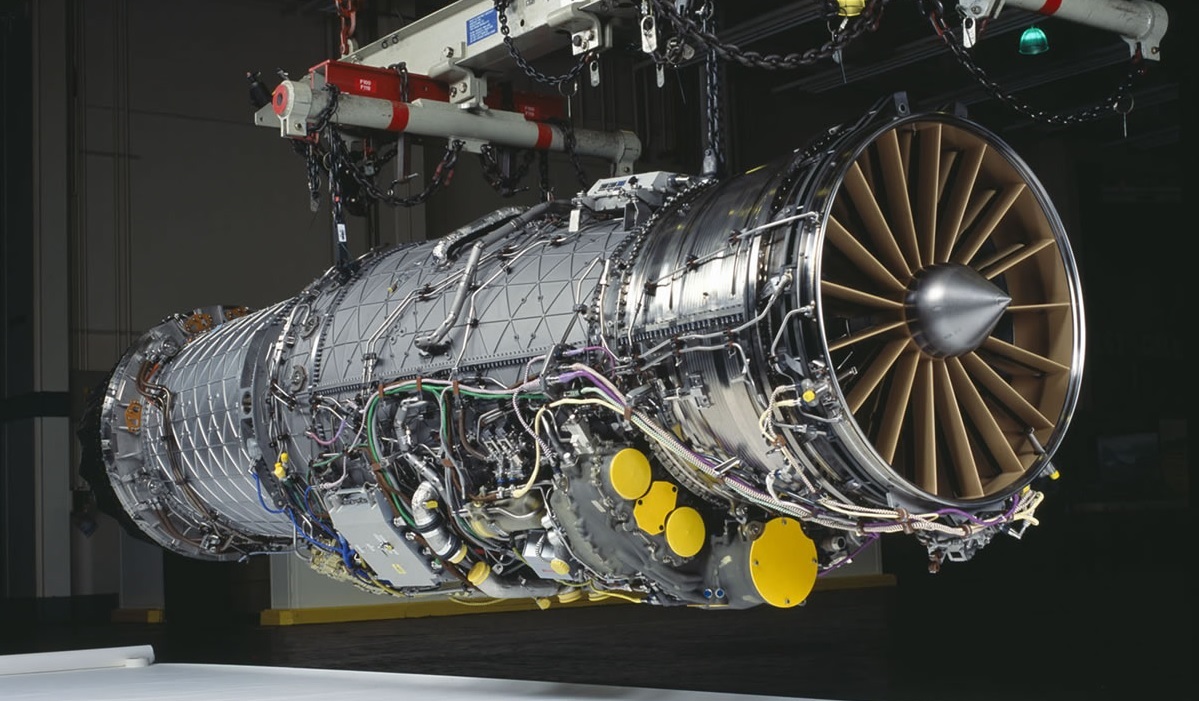 India’s AMCA Engine Decision: Safran vs. Rolls-Royce Final Expected by 2025
India’s AMCA Engine Decision: Safran vs. Rolls-Royce Final Expected by 2025
-
 Pakistan Announces 15% Increase in Defence Budget for 2024-25 Amid Economic Crisis
Pakistan Announces 15% Increase in Defence Budget for 2024-25 Amid Economic Crisis
-
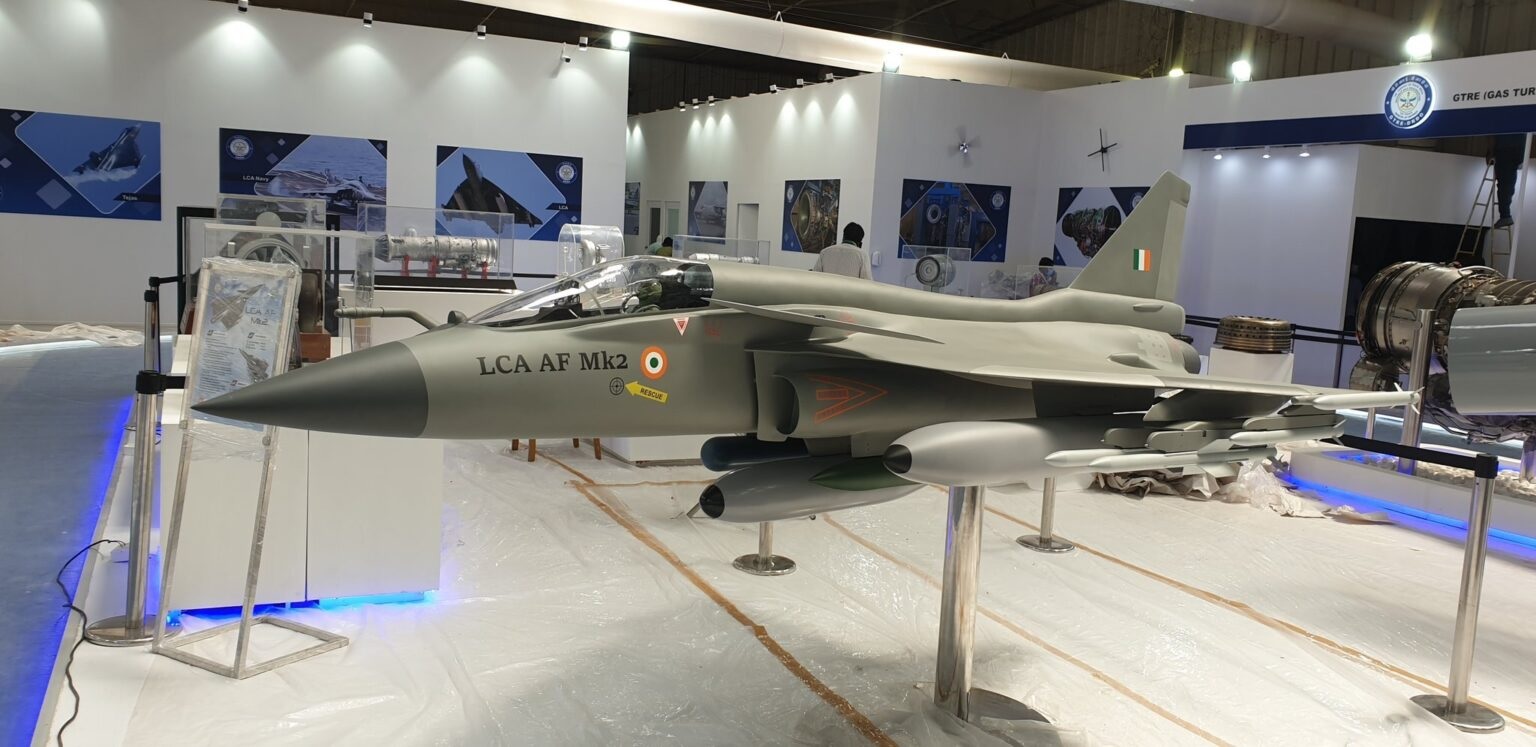 Tejas Mk2 Nears 2025 Rollout as HAL Ramps Up Final Assembly and System Integration
Tejas Mk2 Nears 2025 Rollout as HAL Ramps Up Final Assembly and System Integration
-
 India's TEDBF Program Takes Shape First Flight by 2028: Aiming for Naval Supremacy with Advanced Stealth and Technology
India's TEDBF Program Takes Shape First Flight by 2028: Aiming for Naval Supremacy with Advanced Stealth and Technology
Top Trending in 4 Days
-
 Ukrainian An-124 “Ruslan” Makes Secretive Landing in Israel, Fueling Speculation of Covert Military Support to Kyiv
Ukrainian An-124 “Ruslan” Makes Secretive Landing in Israel, Fueling Speculation of Covert Military Support to Kyiv
-
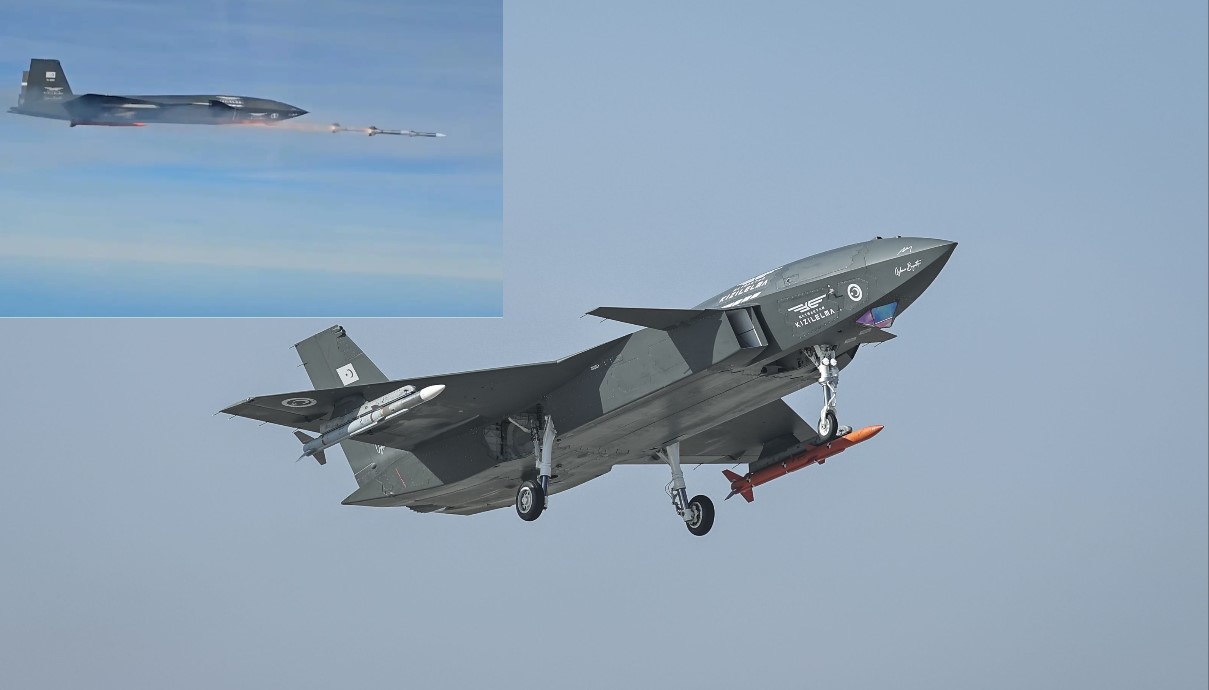 Türkiye’s Bayraktar Kizilelma Becomes First Unmanned Fighter to Shoot Down an Aerial Target with Air-to-Air Missile
Türkiye’s Bayraktar Kizilelma Becomes First Unmanned Fighter to Shoot Down an Aerial Target with Air-to-Air Missile
-
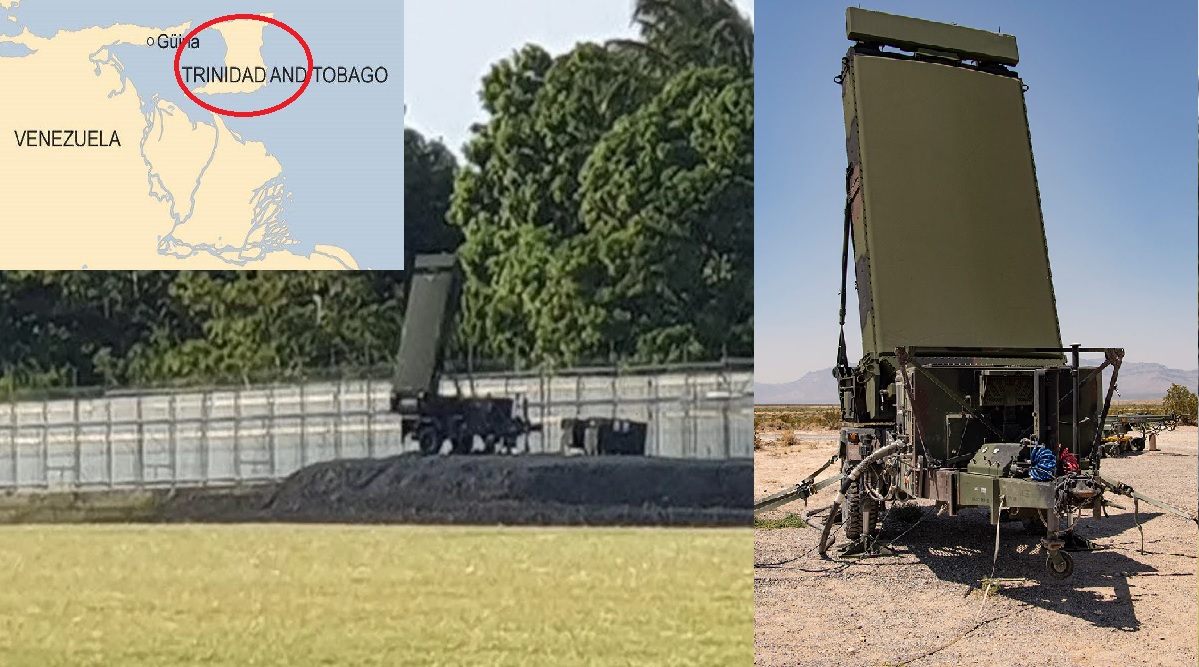 US Marines Install G/ATOR Radar in Tobago For Surveillance Over Southern Caribbean and Venezuela
US Marines Install G/ATOR Radar in Tobago For Surveillance Over Southern Caribbean and Venezuela
-
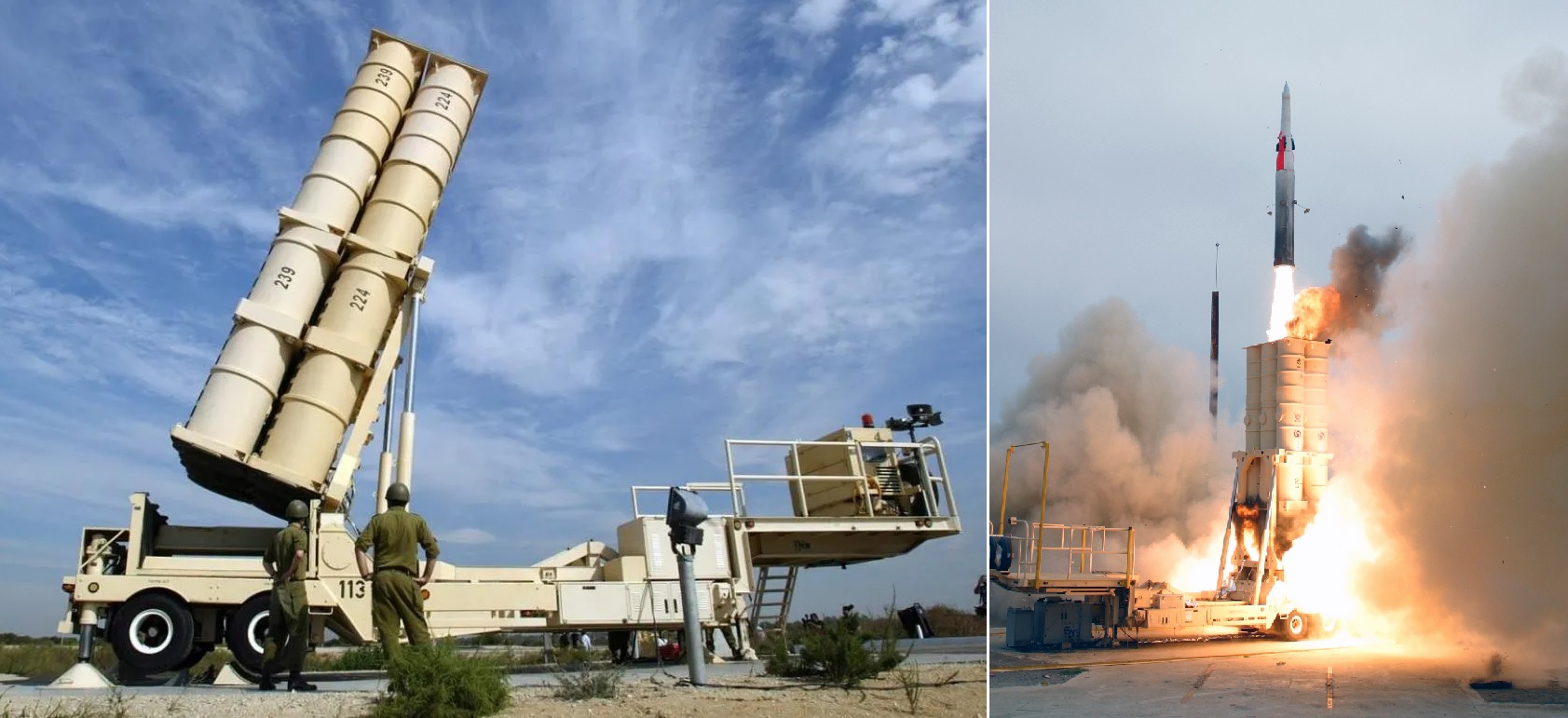 Germany Activates Israel’s Arrow-3, Europe’s First Space-Shield Against Ballistic Missiles
Germany Activates Israel’s Arrow-3, Europe’s First Space-Shield Against Ballistic Missiles
-
 Zelensky Under Pressure as MP Claims He Has Been “Ordered to Resign" Within This Month
Zelensky Under Pressure as MP Claims He Has Been “Ordered to Resign" Within This Month
-
 Venezuela Prepares Asymmetric War Plan: Sabotage, Ambushes, and Guerrilla Attacks Against a Possible US Strike
Venezuela Prepares Asymmetric War Plan: Sabotage, Ambushes, and Guerrilla Attacks Against a Possible US Strike
-
 America’s Secret F-47 “Ghost Eagle” Fighter Jet Fly With Five Armed Autonomous Drones
America’s Secret F-47 “Ghost Eagle” Fighter Jet Fly With Five Armed Autonomous Drones
-
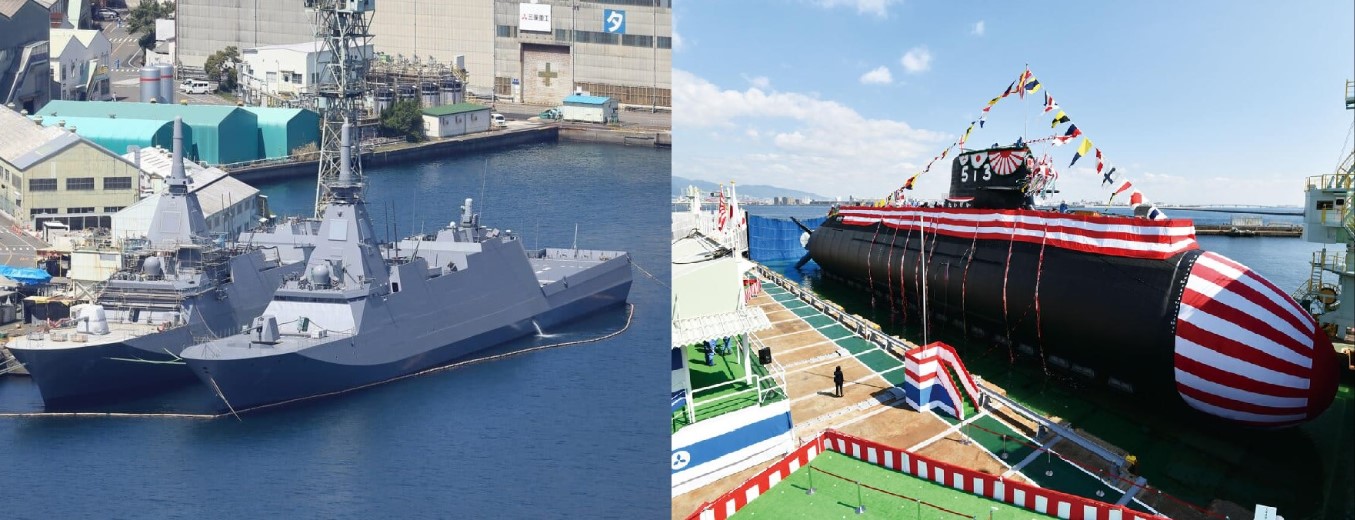 Japan Approves $5.4 billion Supplementary Defense Budget For Accelerate Frigate and Submarine Construction
Japan Approves $5.4 billion Supplementary Defense Budget For Accelerate Frigate and Submarine Construction

